The Angkor temple complex consists of the world famous Angkor Wat, but is also consists of over 40 other temples in the region. Adjacent to this region is that of Beng Mealea, a near equally sized temple, but in a complete state of disrepair and natural takeover.
Our guide for the day was Pouen, a driver who lived an hour out of town on his farm. His wife was a chef at the hostel, so they would drive in together, work, and then return home to their daughter in the evening.
The drive to the temple was lovely. We left early in the morning to try and escape most of the heat. The late morning sun can be a struggle in Cambodia, a relatively humid country. There were a couple gusts of wind that were almost chilly. It was welcome. The countryside consisted of many small wooden houses and restaurants lining the roads. Behind this row of infrastructure was that of forest, temple and farm.
After an hour and a half of bombing around the countryside, we arrived at the main event. Beng Mealea. Immidietly you could tell the size of the temple, as you could not see it at all. Just the remnants of a long stone path that disappeared between all of the trees. We began down the path, before getting immidietly distracted by a side temple.
Prasat Kansaeng, an outpost temple, lay 100m off the main walkway on its own. We took the side path there, and saw our first Khmer temple. Thousand year old intricately carved lichen decorated sandstone that was still mostly stacked all together. Sections of the temple had modern supports in the form of wooden braces and metal scaffolding to prevent further decay. It was a cool place to explore, as we had it all to ourselves.
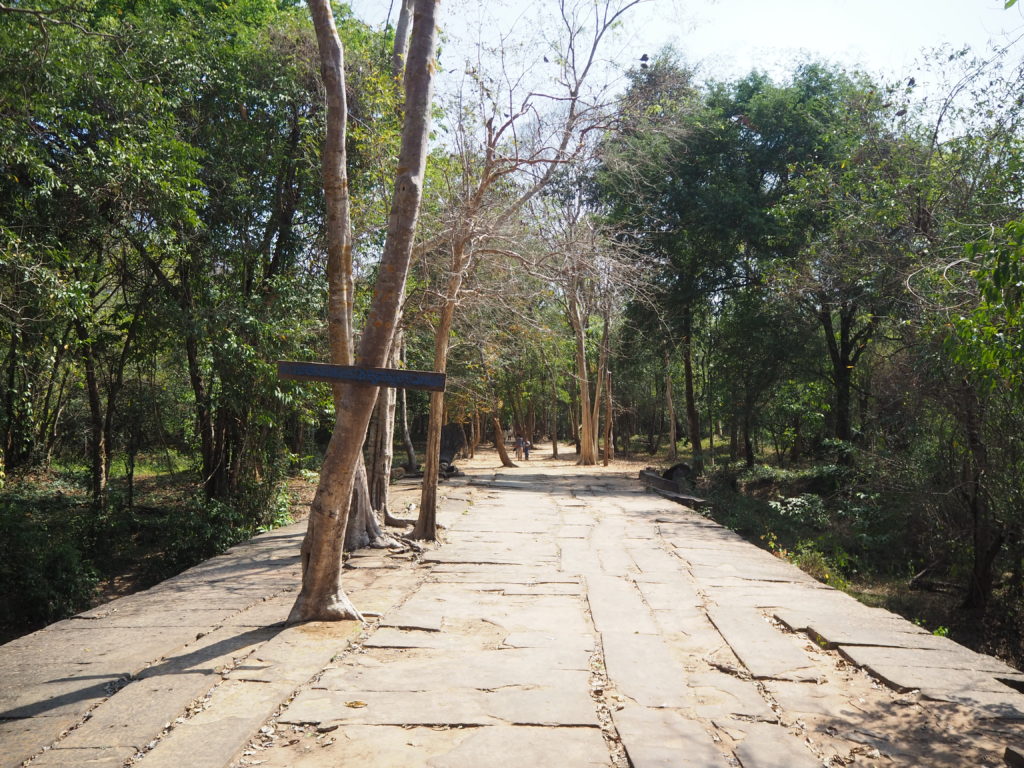
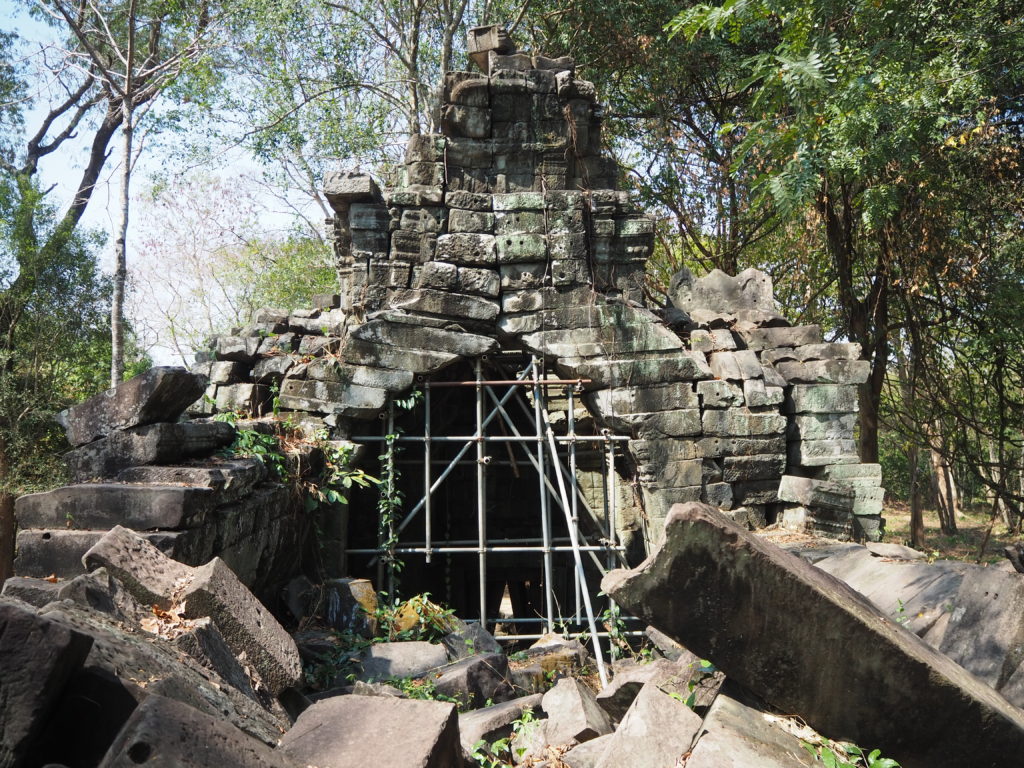
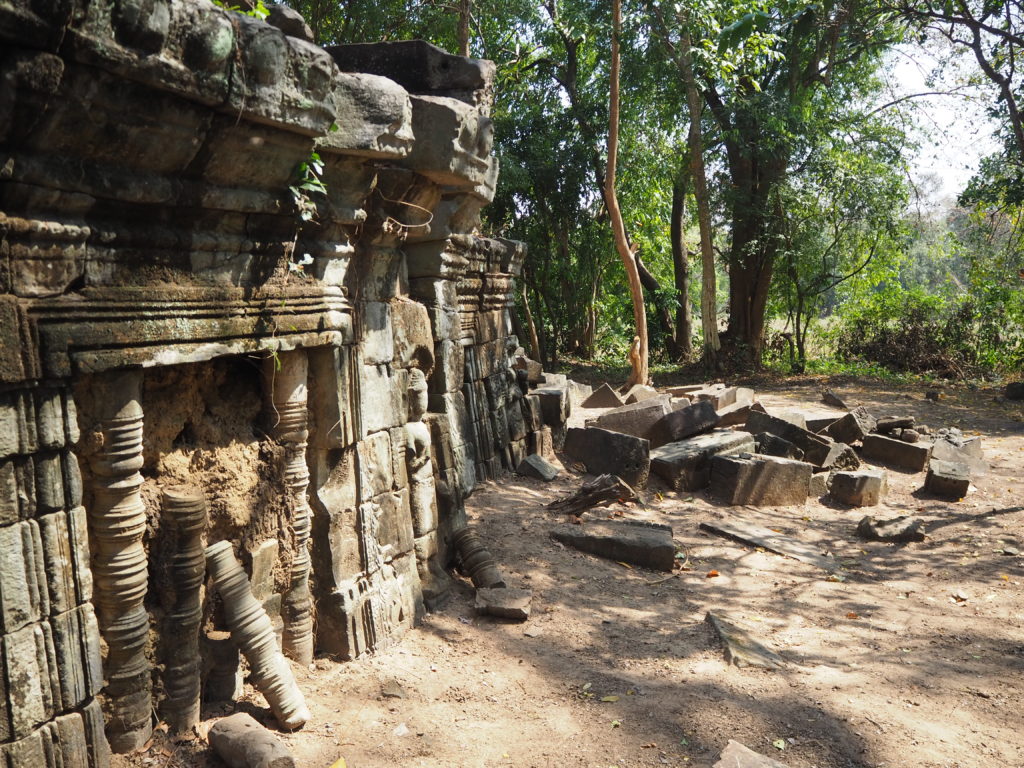
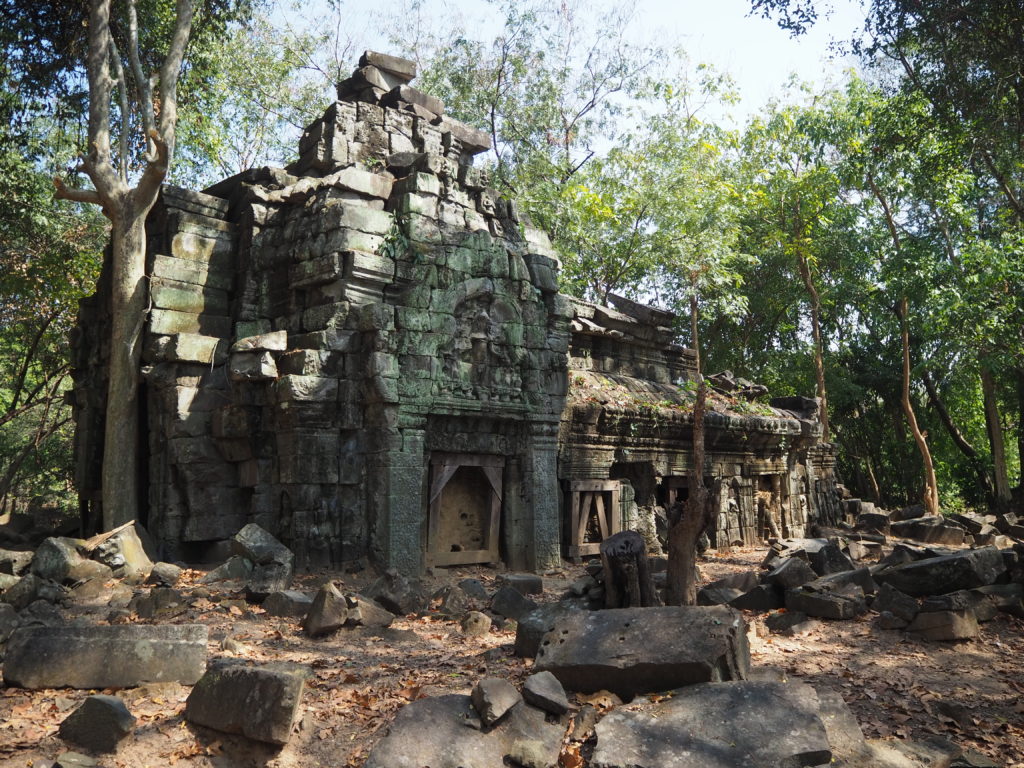
Ok, back on track. Beng Mealea. Not much is known about this temple. Archeologists only assume it is the same age as the rest of the Angkor complex, due to similar building styles. It would have been its own complex though. A square kilometer of land surrounded by a moat, and in the middle would have been the famed temple in all its glory. Instead today the moat is dry, and the land that would have been houses and farms are just trees.
The temple in the middle came into view. A long staircase towards the entrance to the actual temple itself was covered in trees and fallen rocks. There were so many trees on top of this rock. It was a massive natural reclamation to observe.
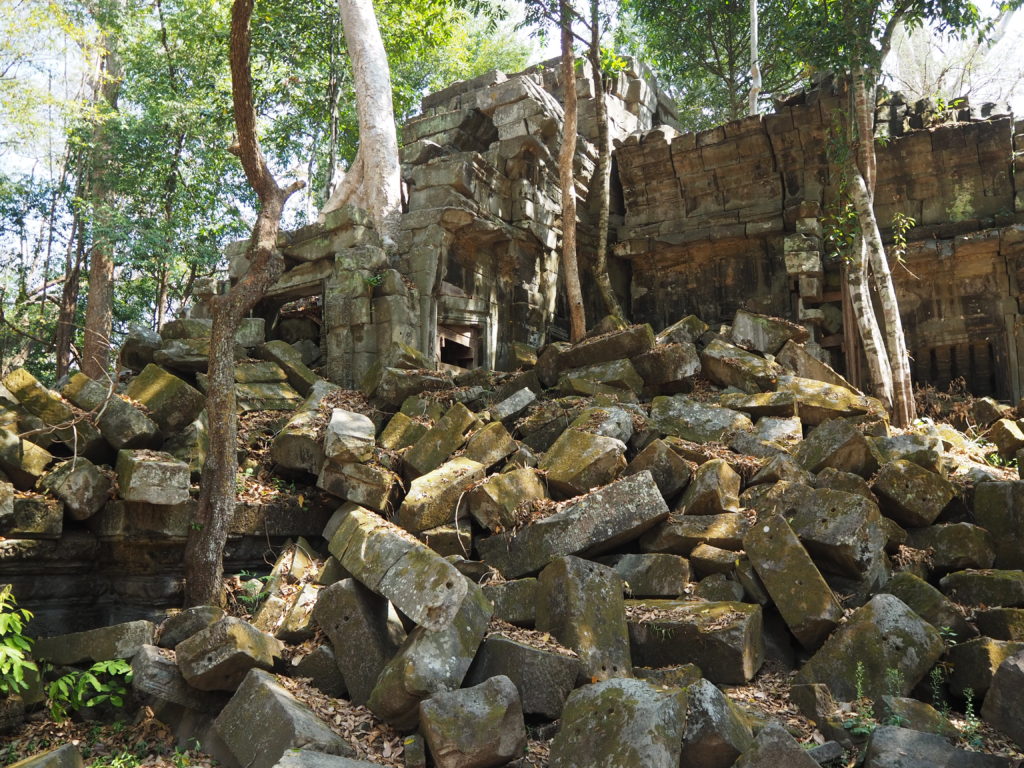
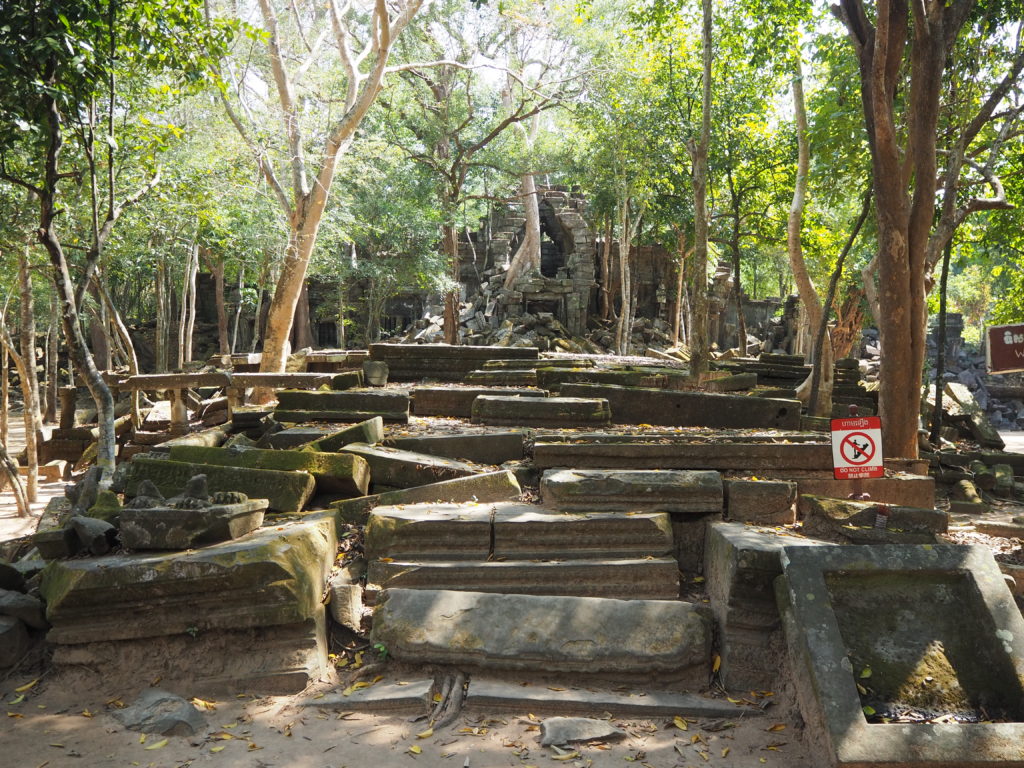
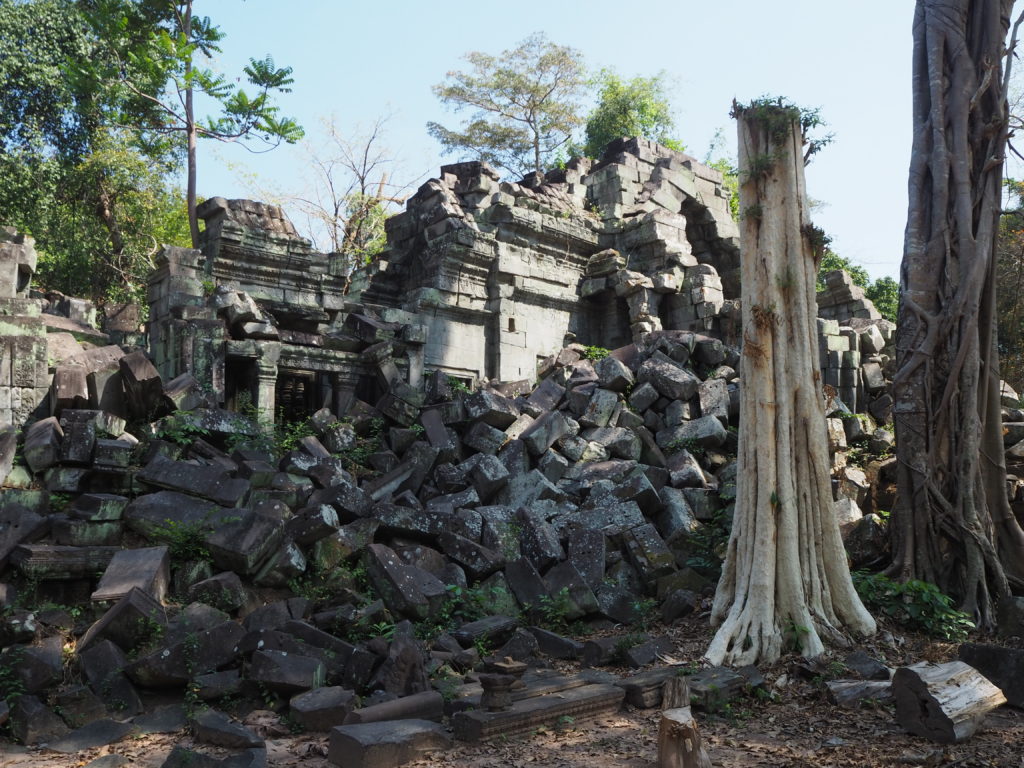
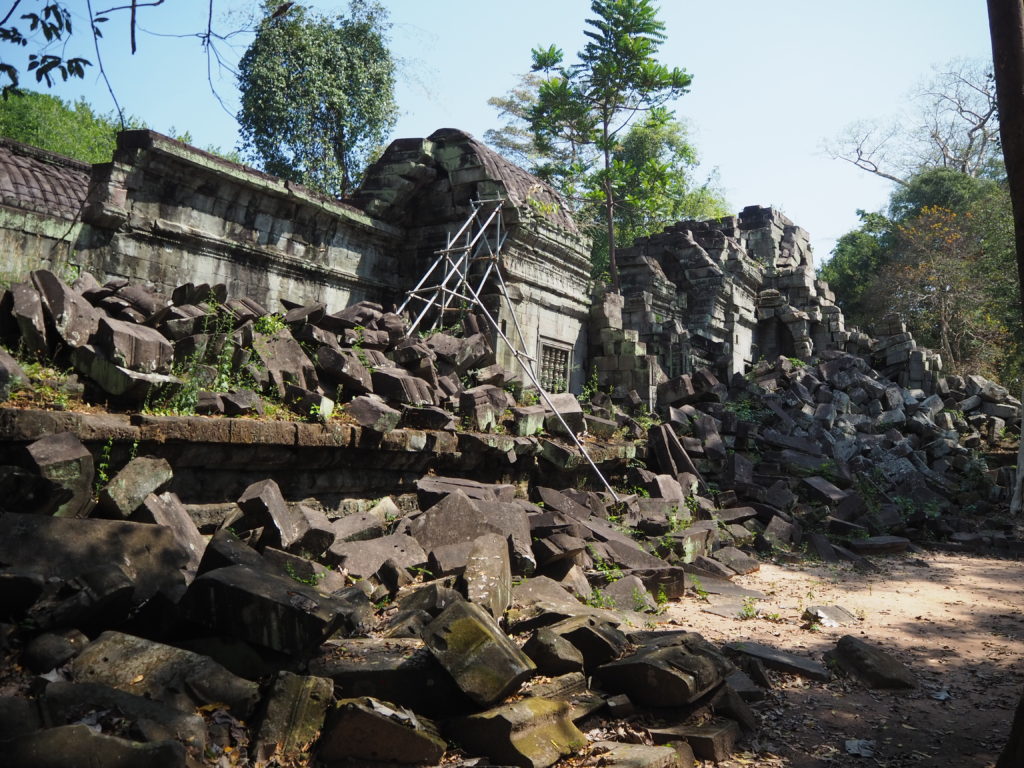
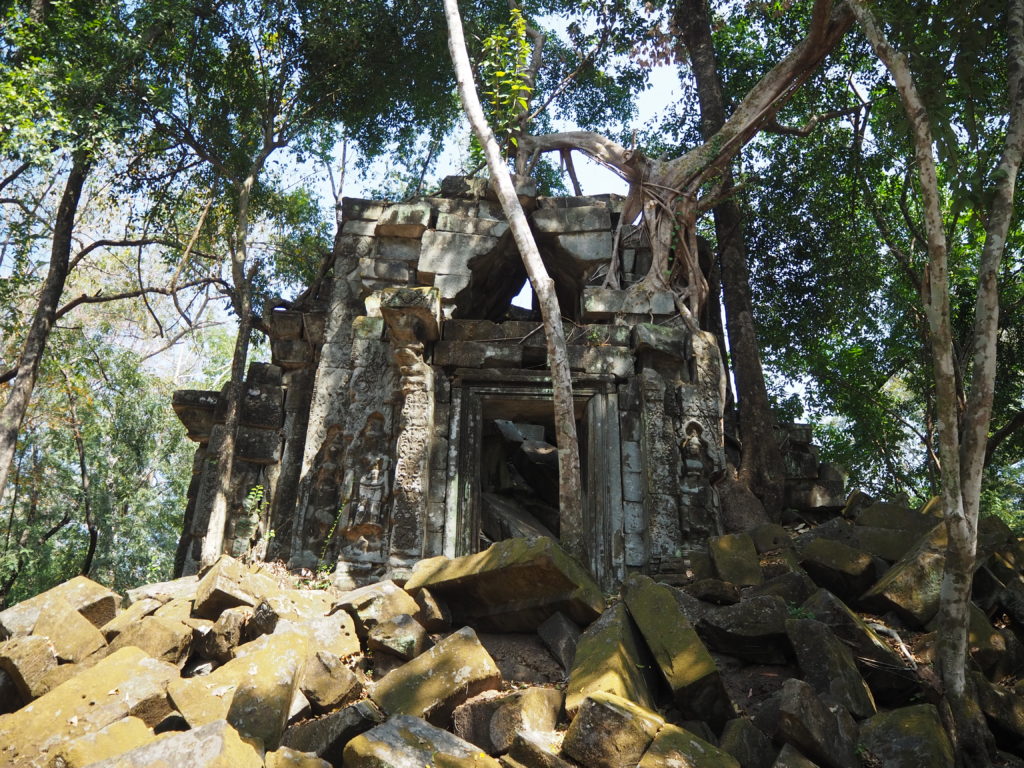
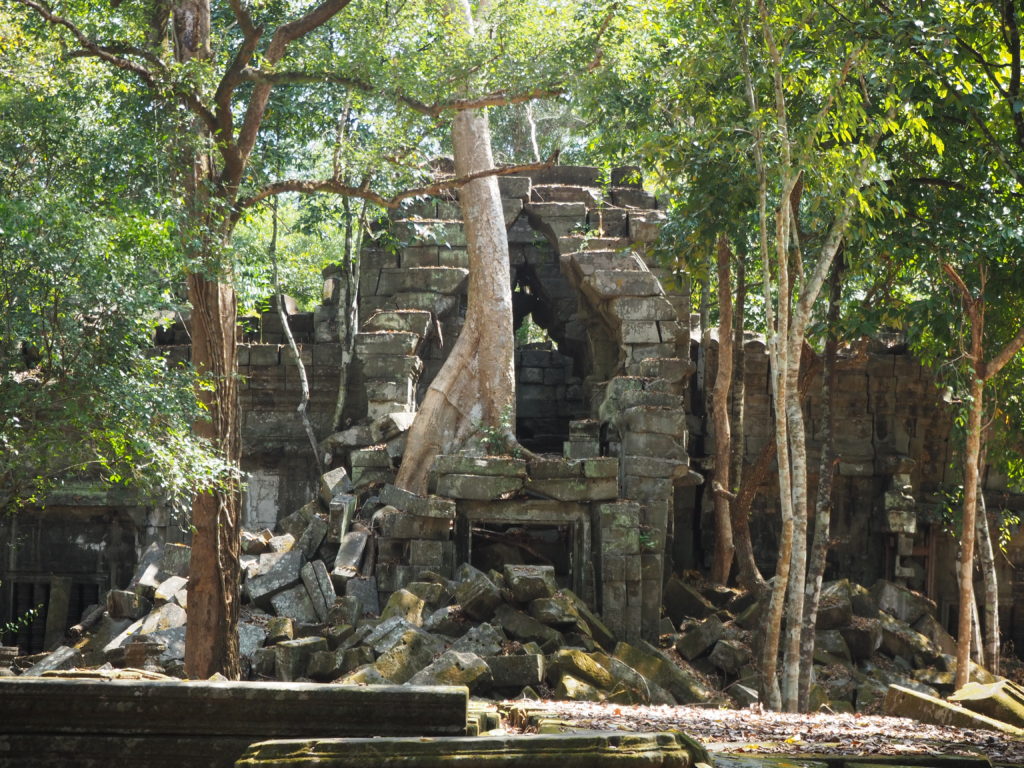
Most large Khmer temples are built in line with the cardinal directions, with an entrance to the north, west, south and east. Beng Mealea is no exception. The west and south pathways are still clear in the modern age, and walkable. The east has transformed into a replica of a romantic autumn pathway, to take a stroll through the fallen leaves. The east disappears into a river.
We started our walk around the temple with a scamper around the perimeter. We could take in the small amount of details that we could observe. For example, each cardinal direction had a very similar looking entrance, of a staircase leading to an arch. The corners all had an outpost looking building attached to it, one with a massive tree on the top. The walls in between were all hallways, some with the rooves caved in.
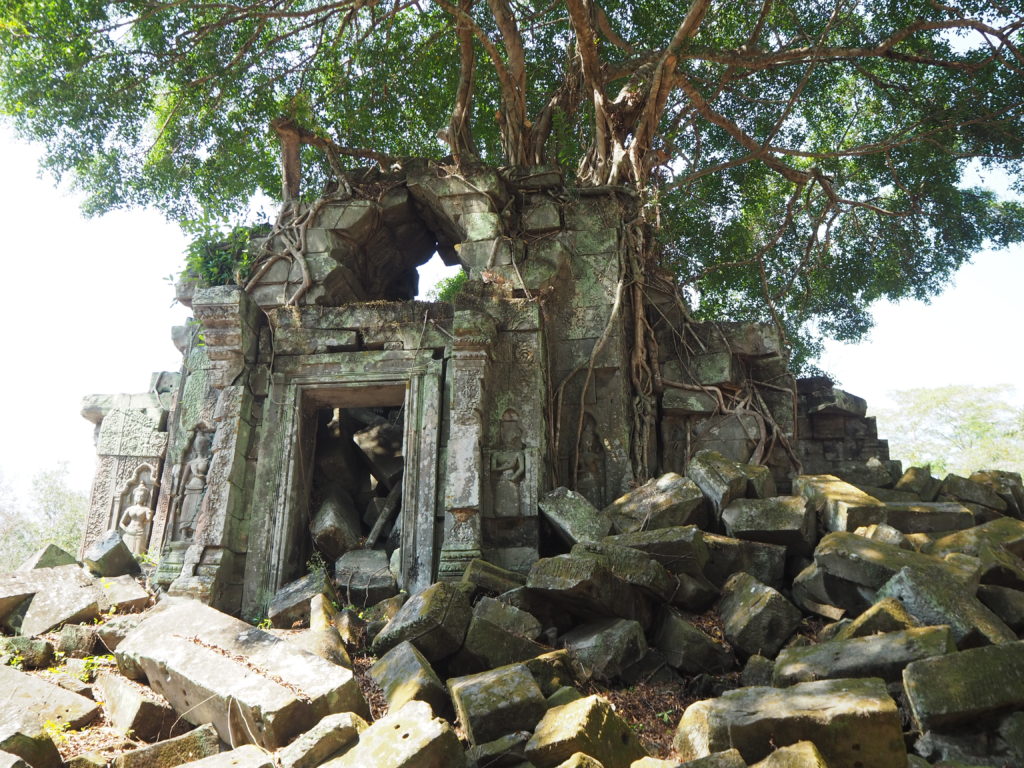
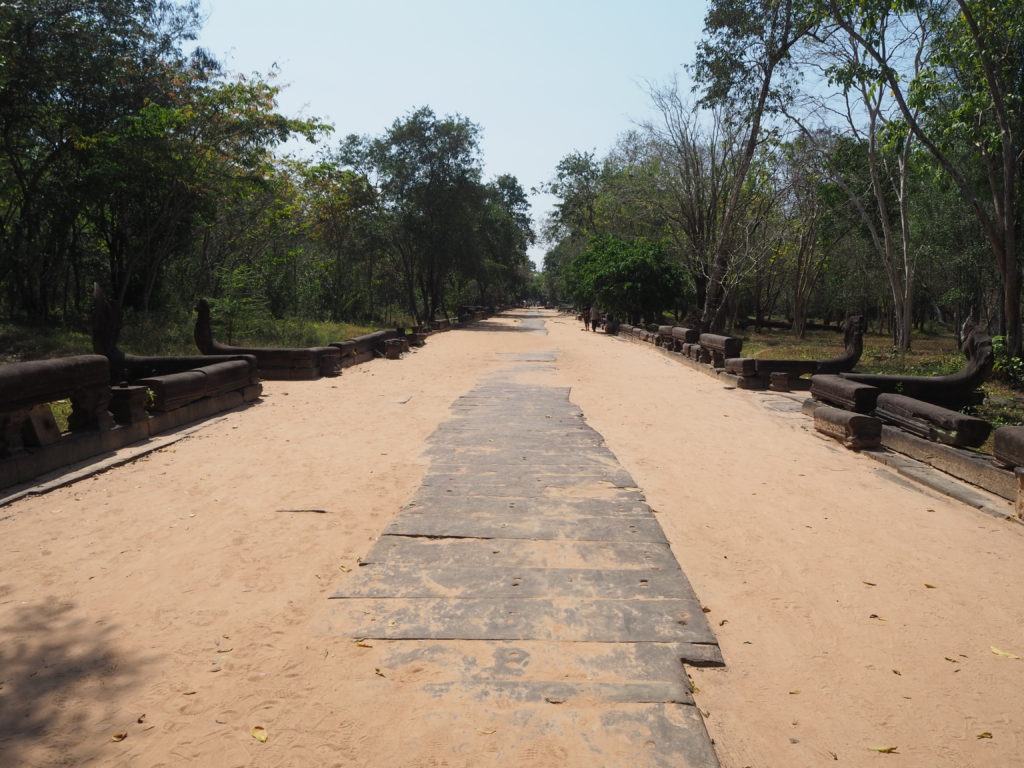
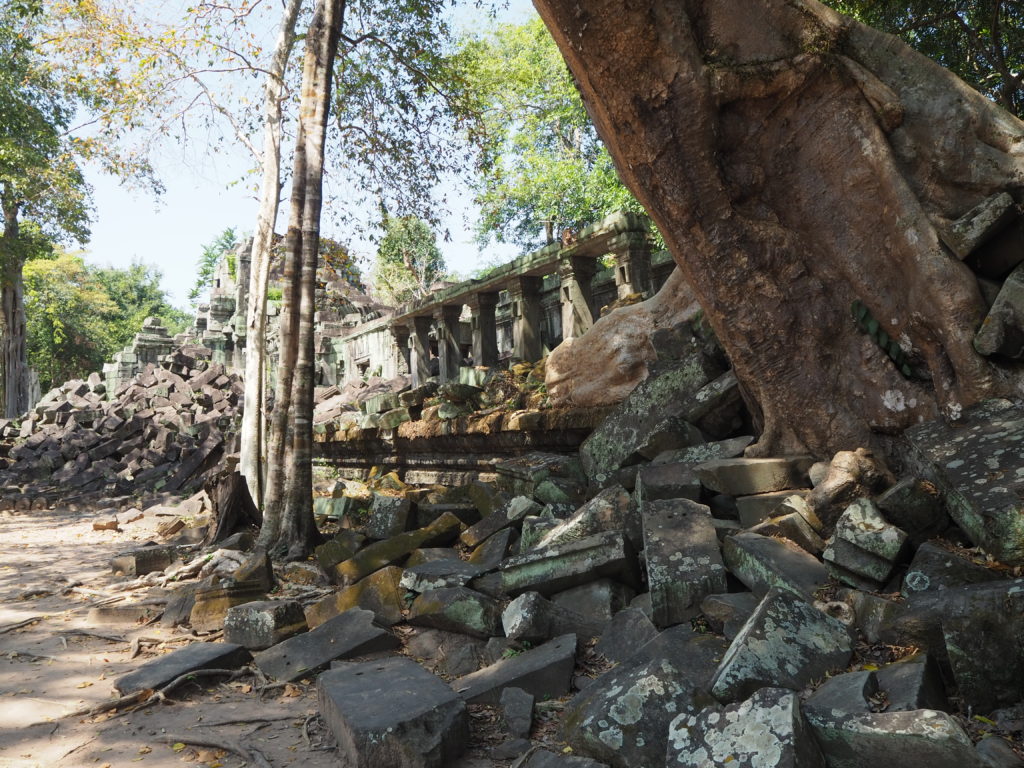
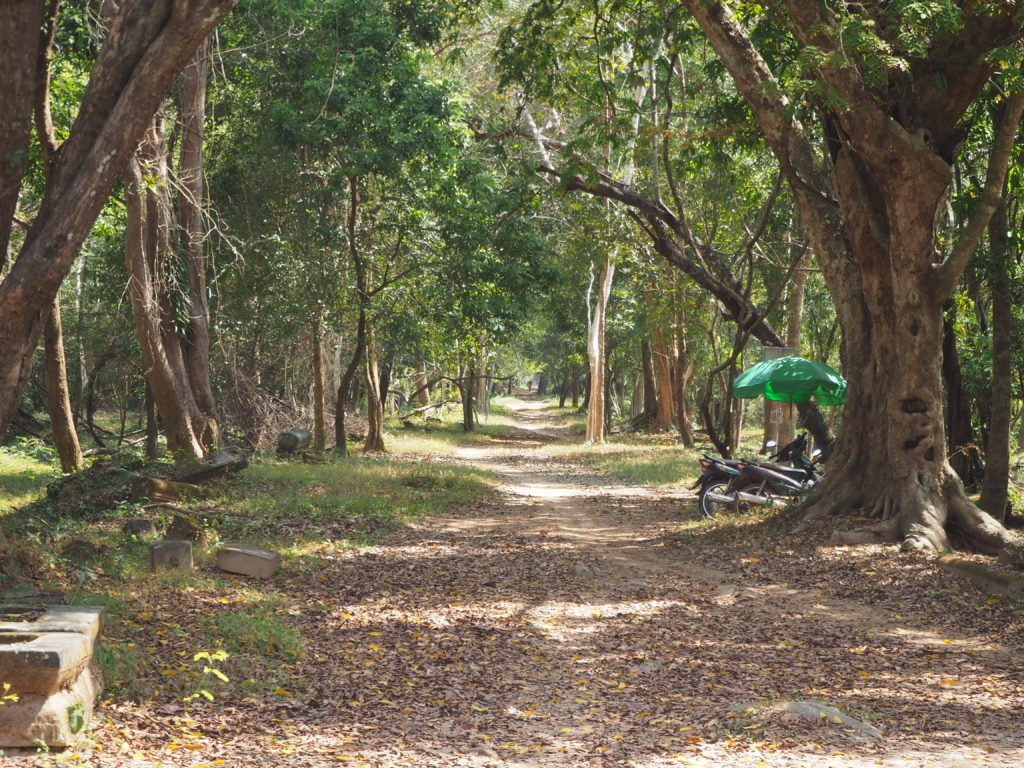
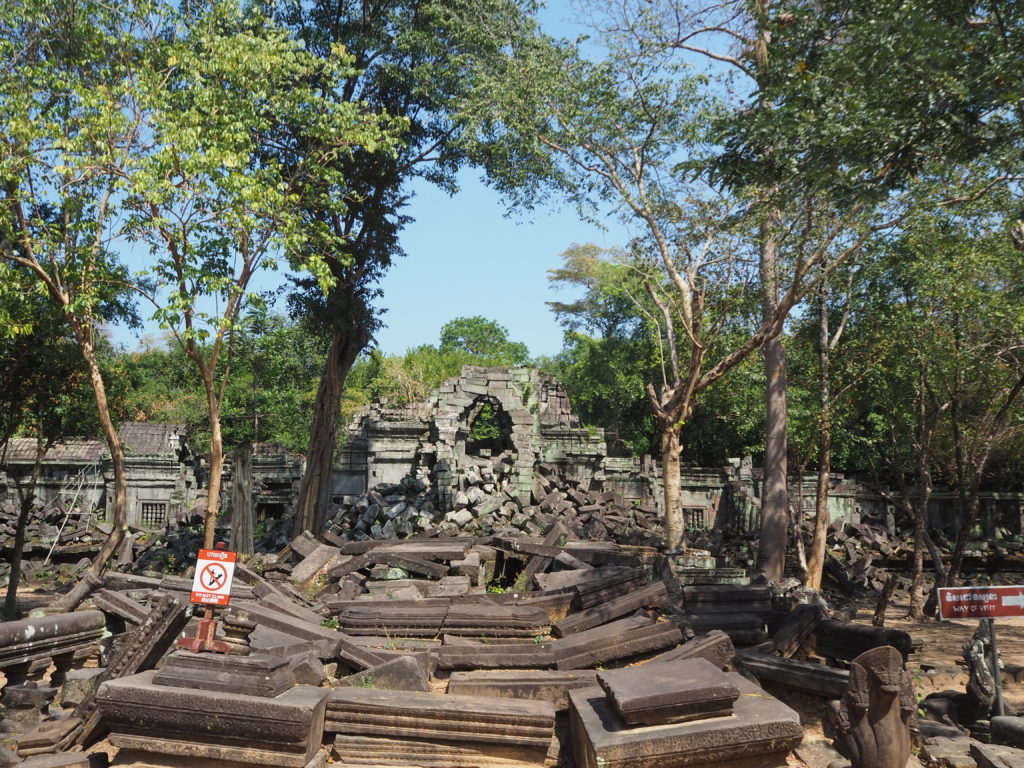
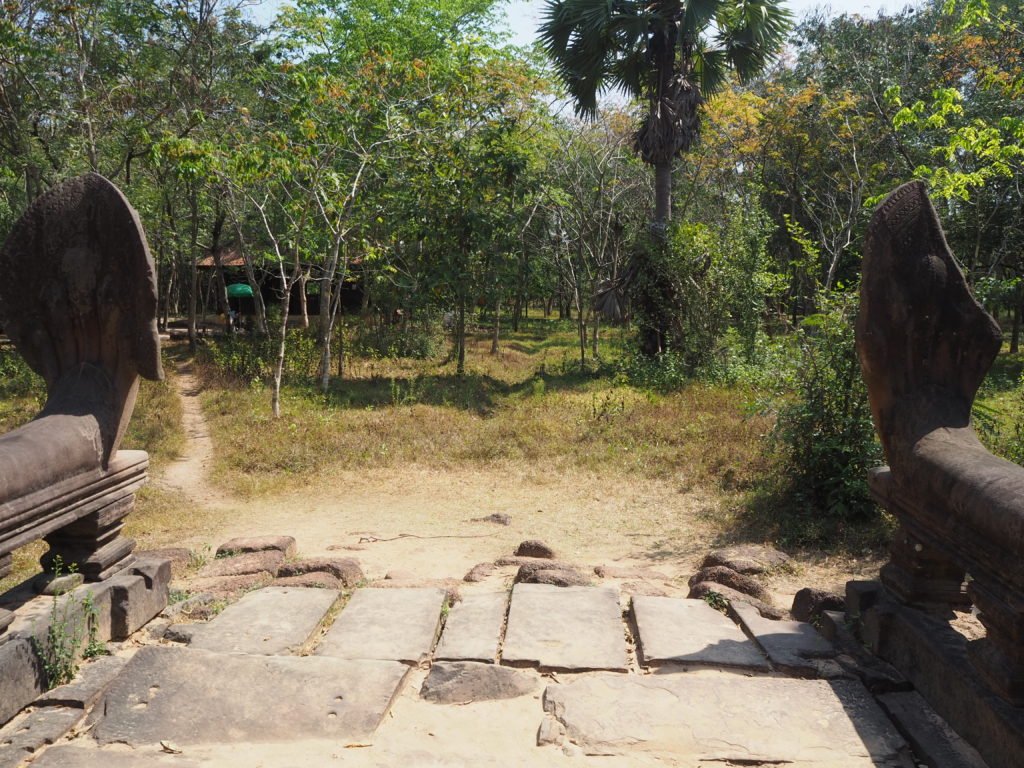
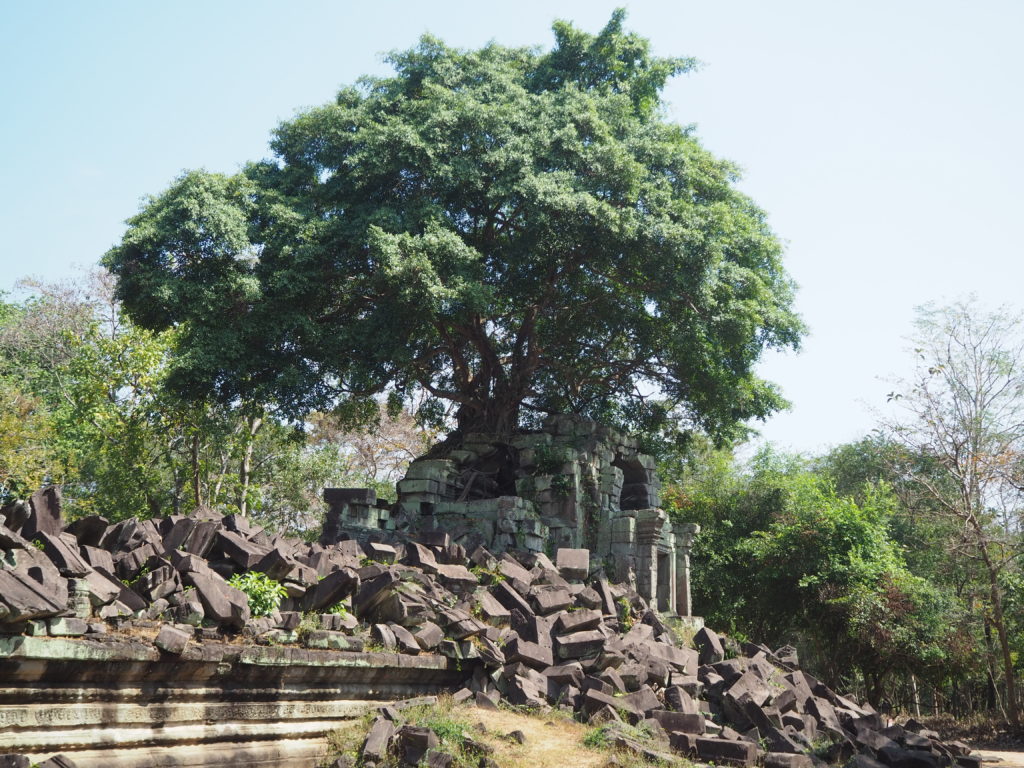
Beng Mealea is very far down on the temple restoration project list. One major project is a wooden walkway that is build over the middle of the temple that we could take. It was only when we took this path could we really take in the scale of natural reclamation of the temple. Trees have taken strategic positioning on top of every old tower, taking advantage of sandstones natural wicking feature. Their roots move between the grooves of the rocks towards the ground, and bury themselves in the dirt.
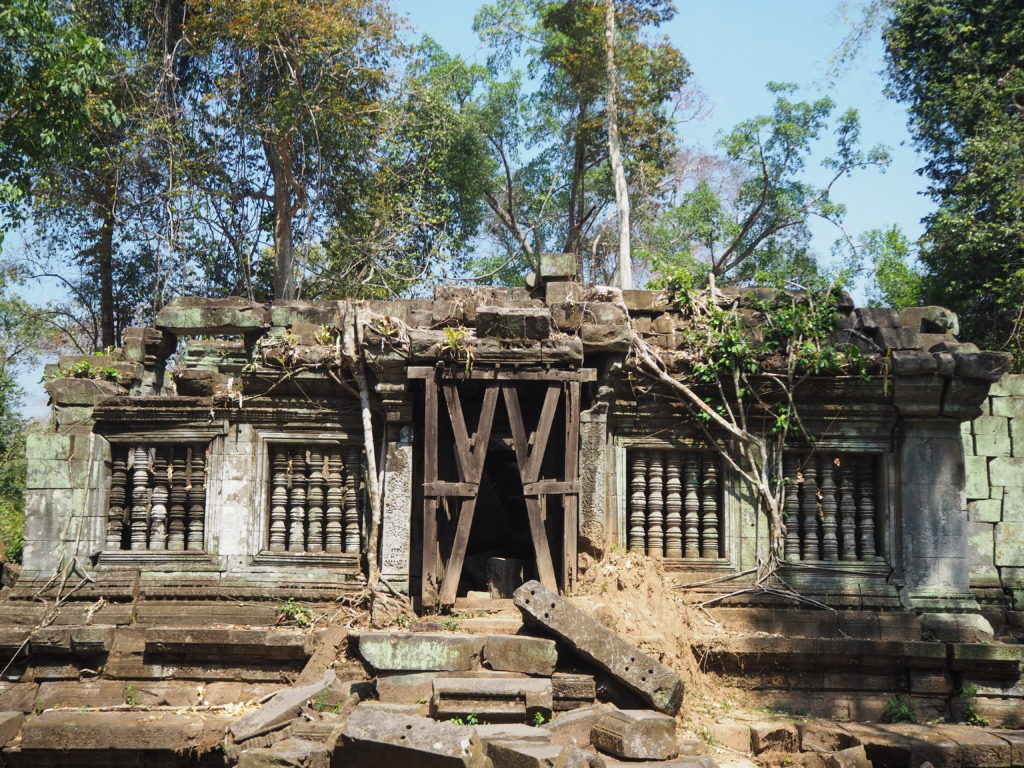
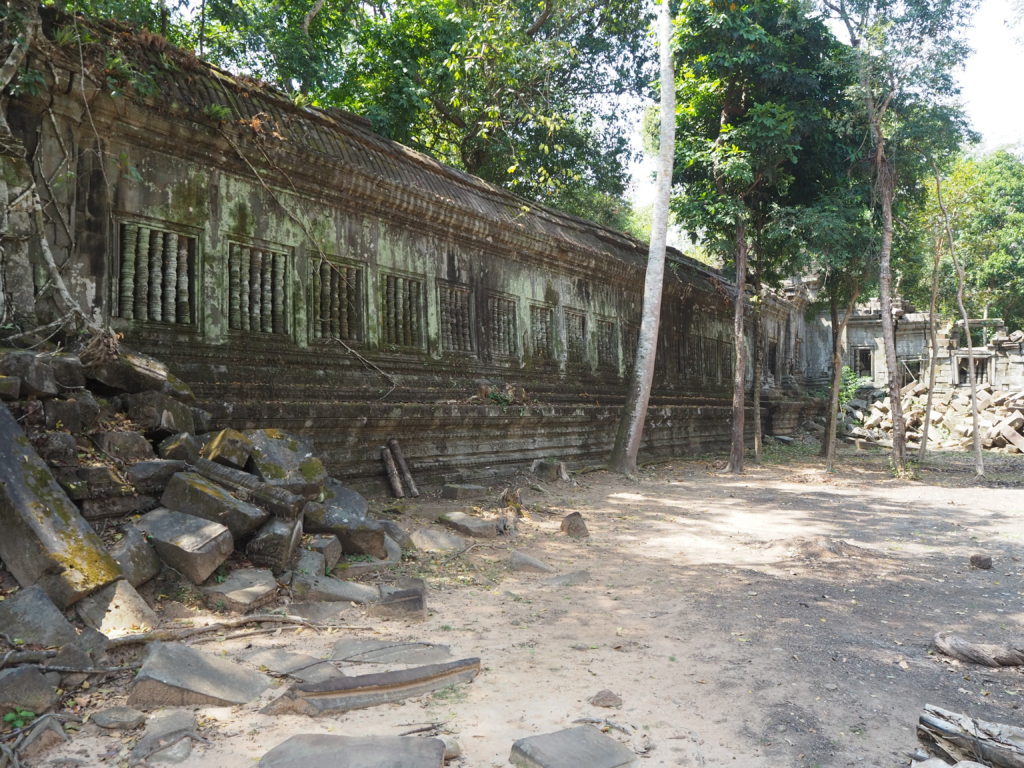
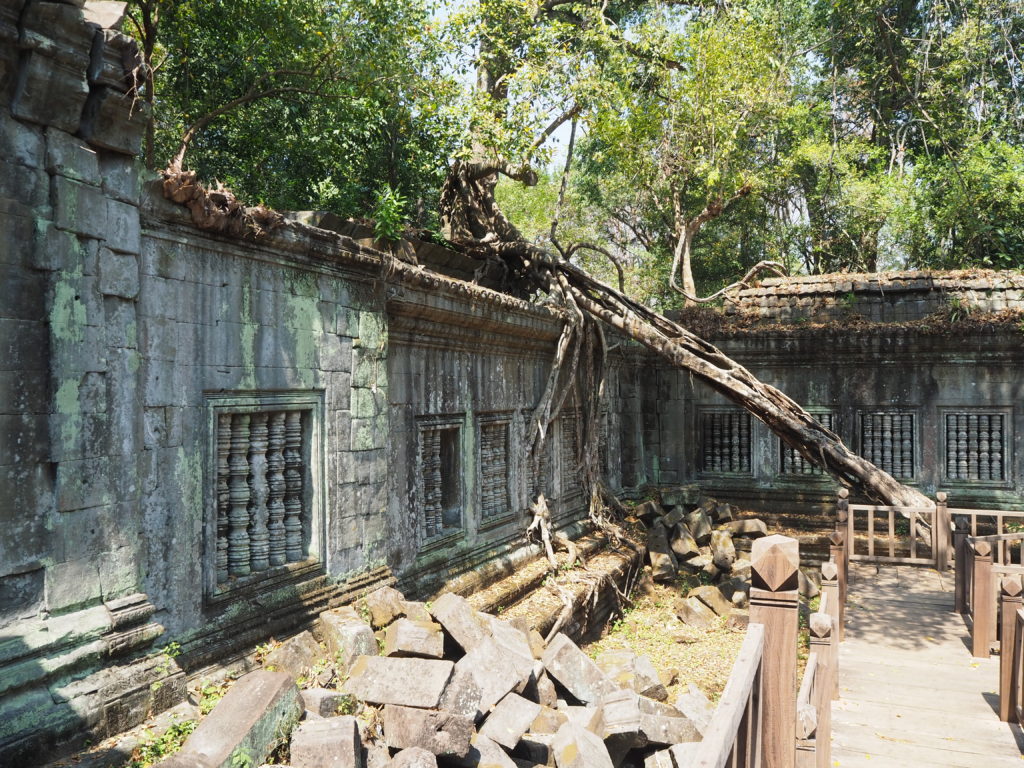
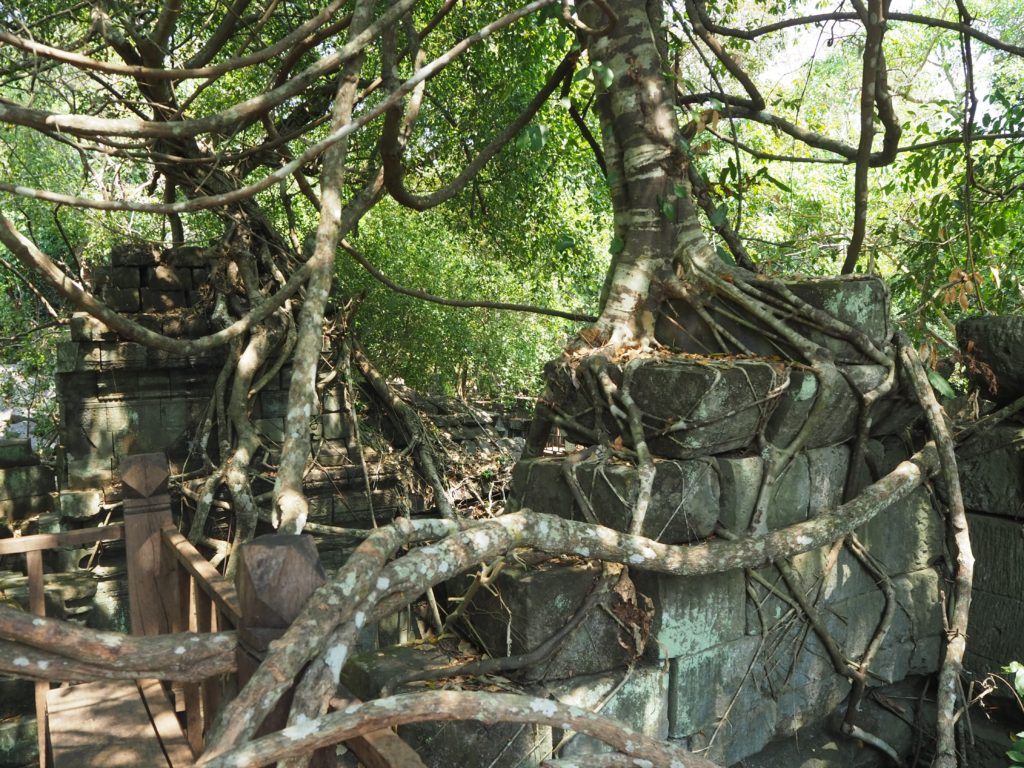
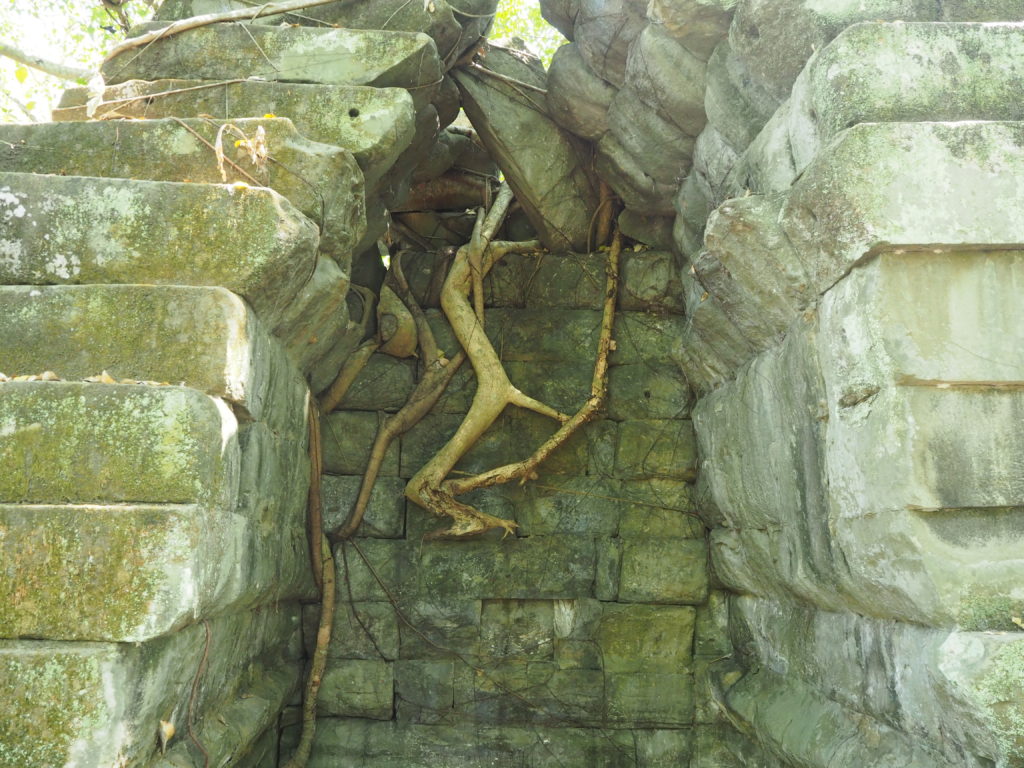
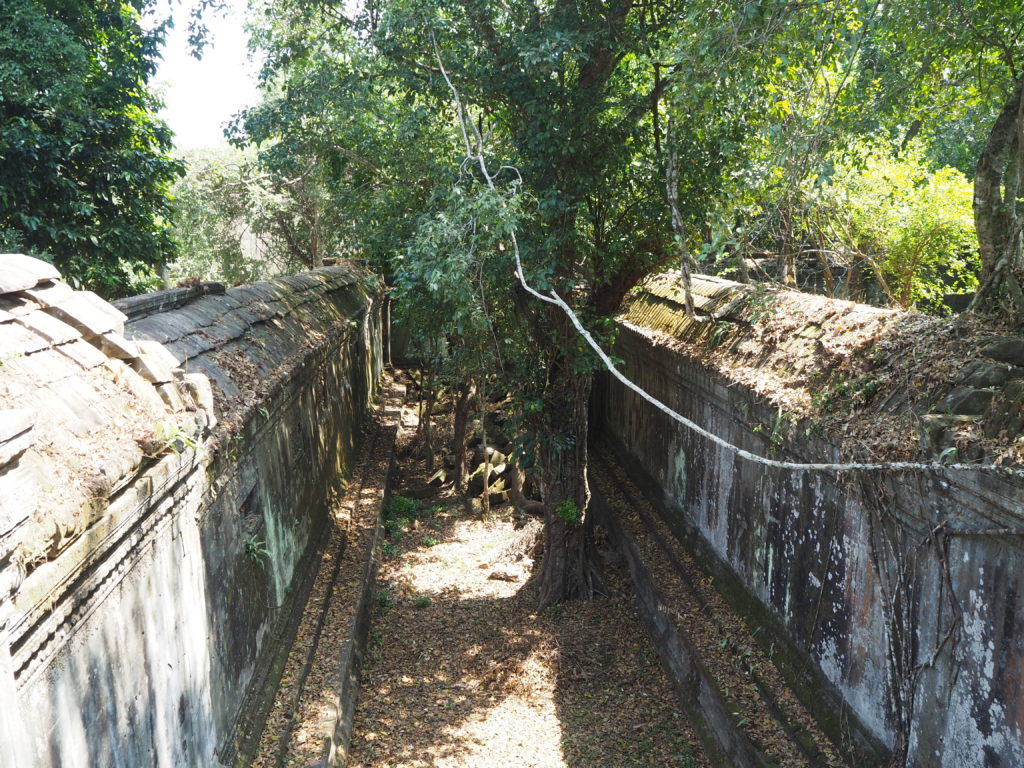
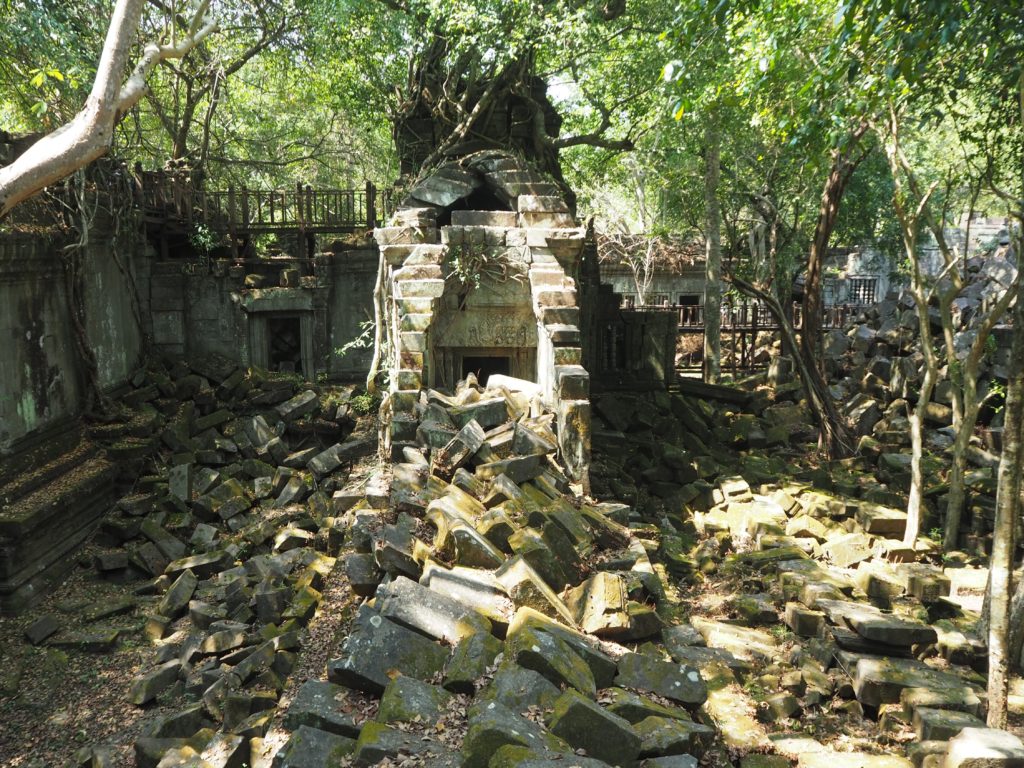
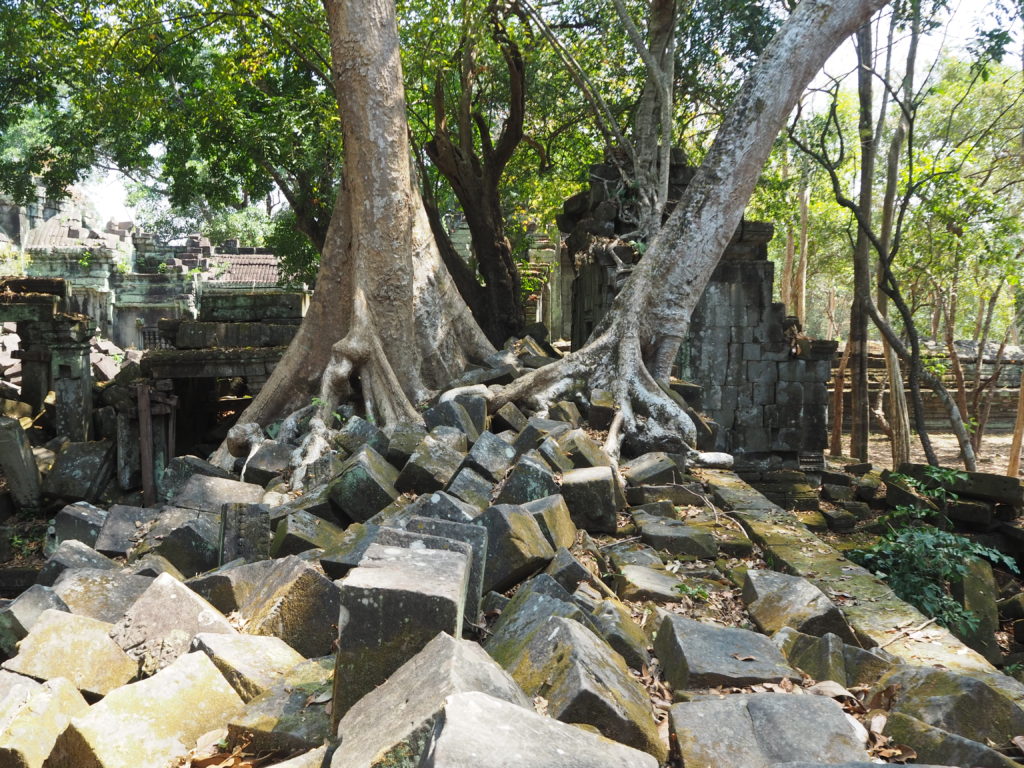
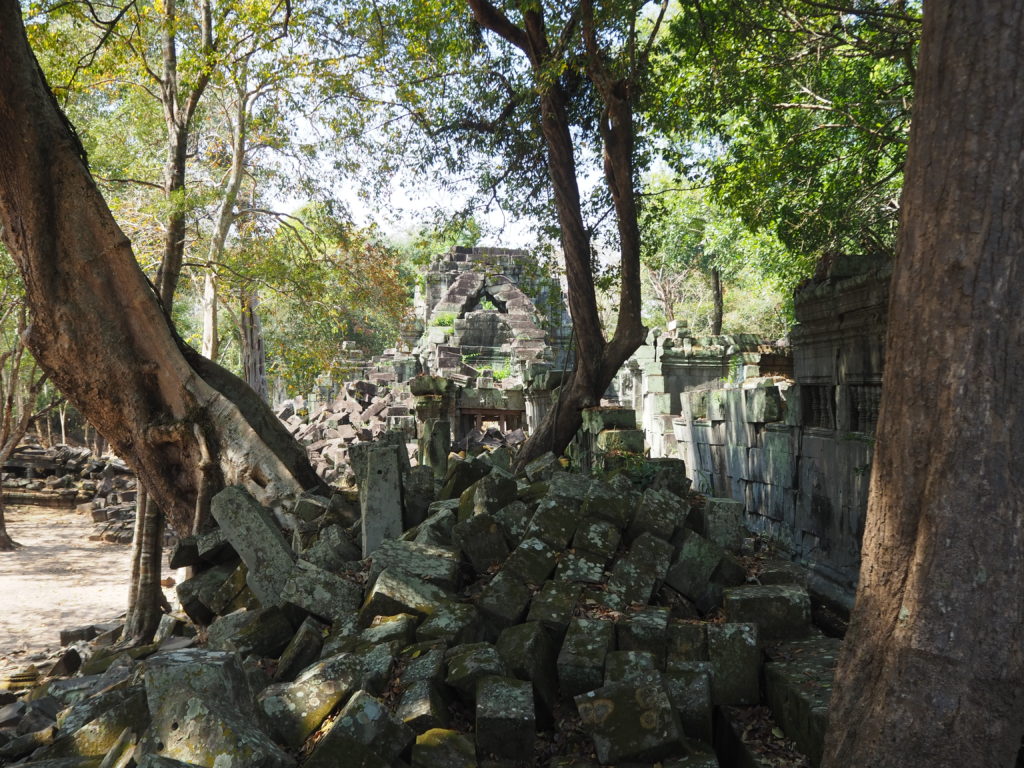
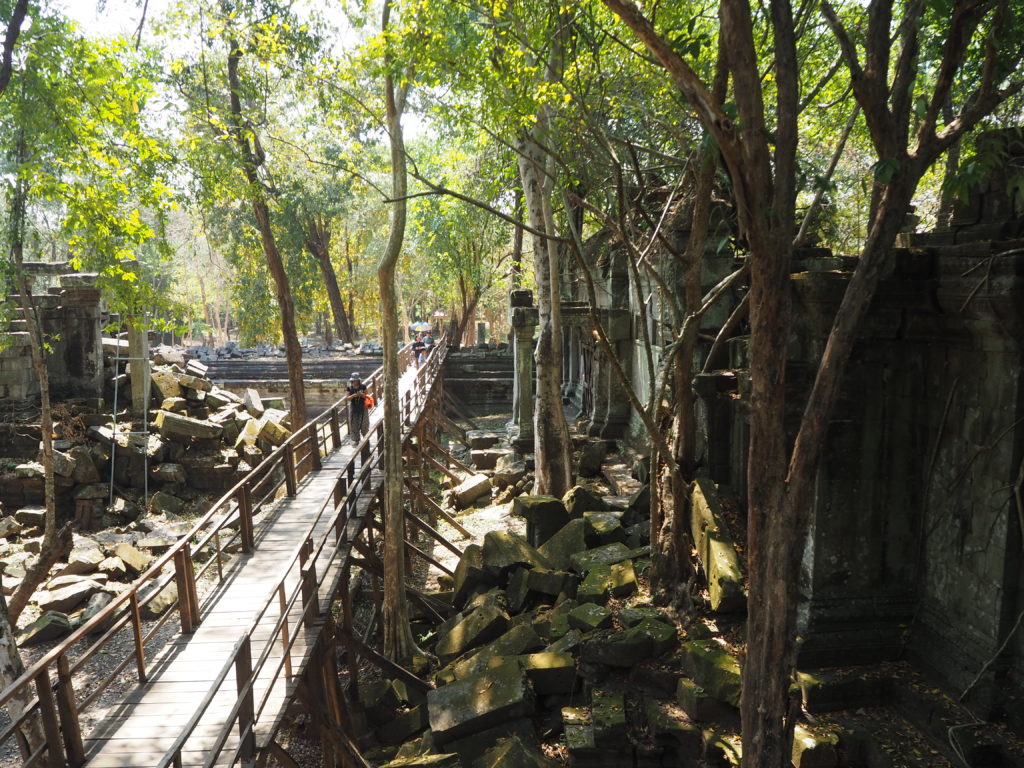
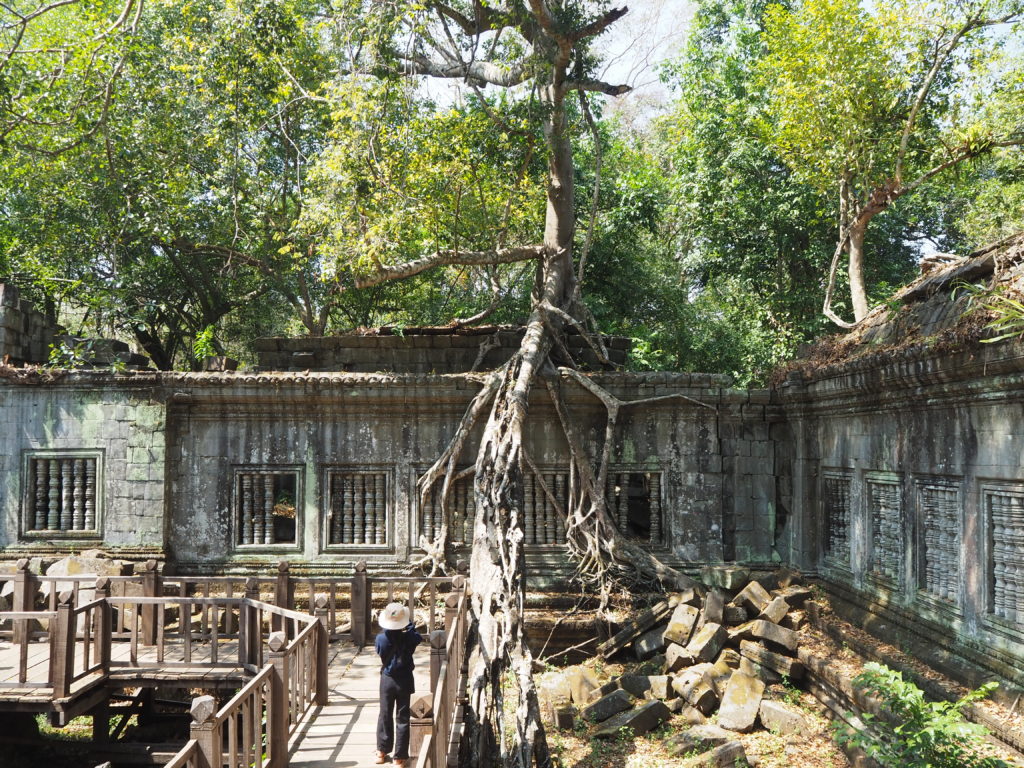
There’s a second interior section we could travel on the other side. This we could explore on the ground. There was a small satellite building, and a whole lot of rubble on the ground. The interior of the temple is being fully held up by wood and scaffolding. It probably would have fallen by now if not for that.
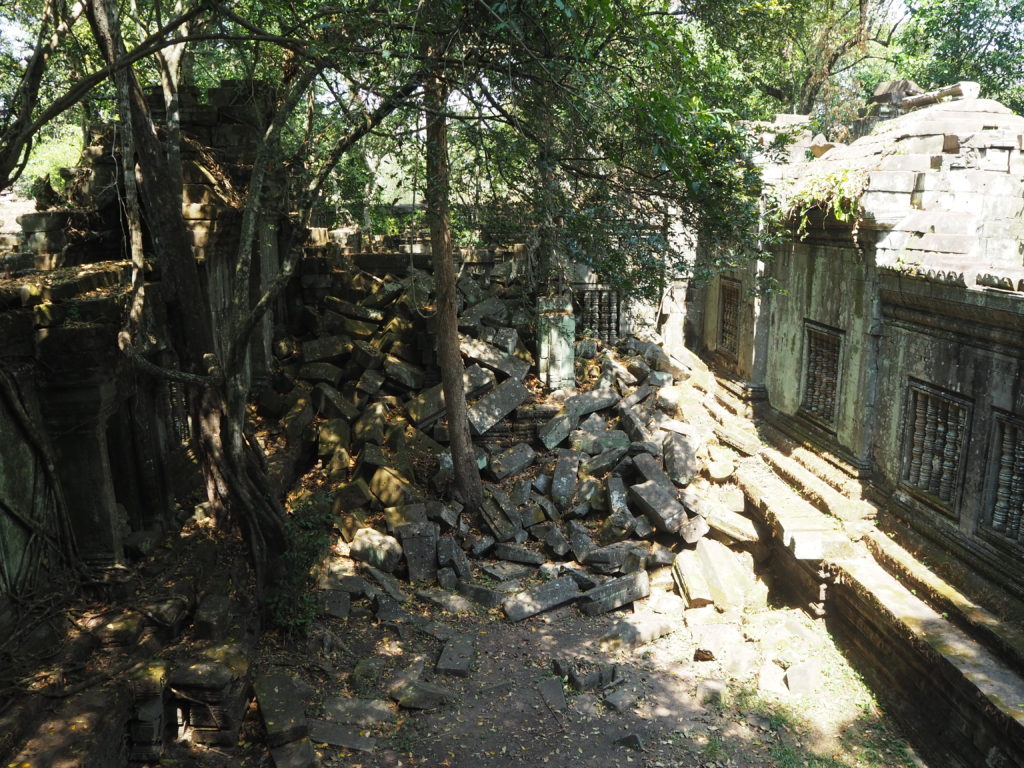
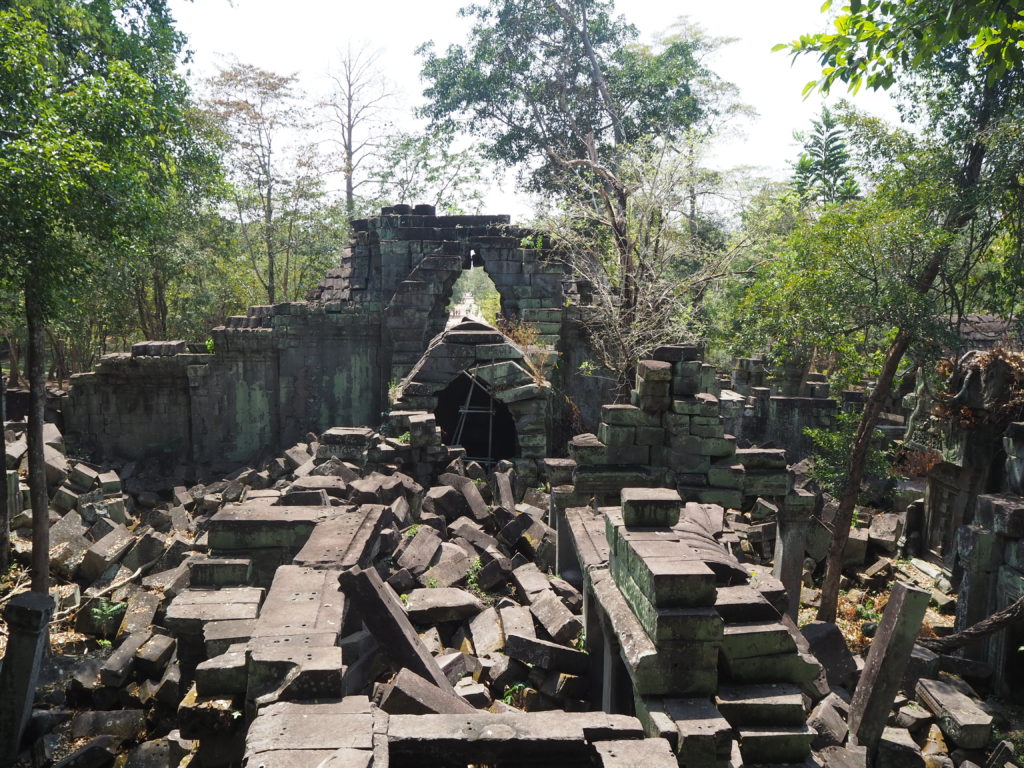
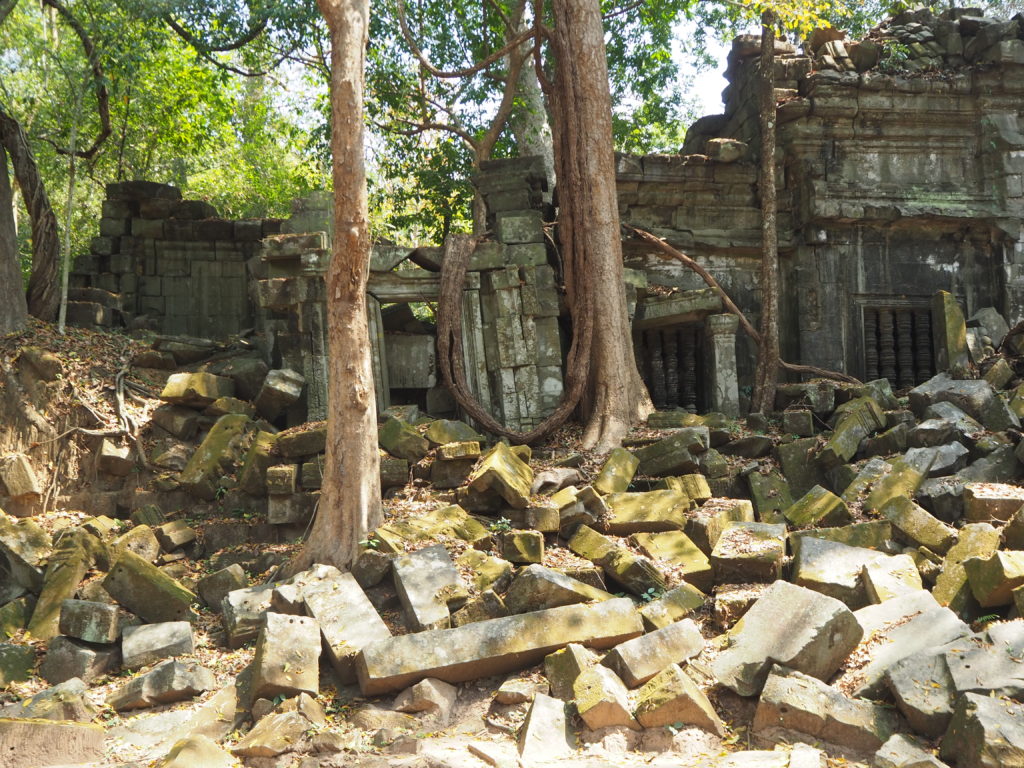
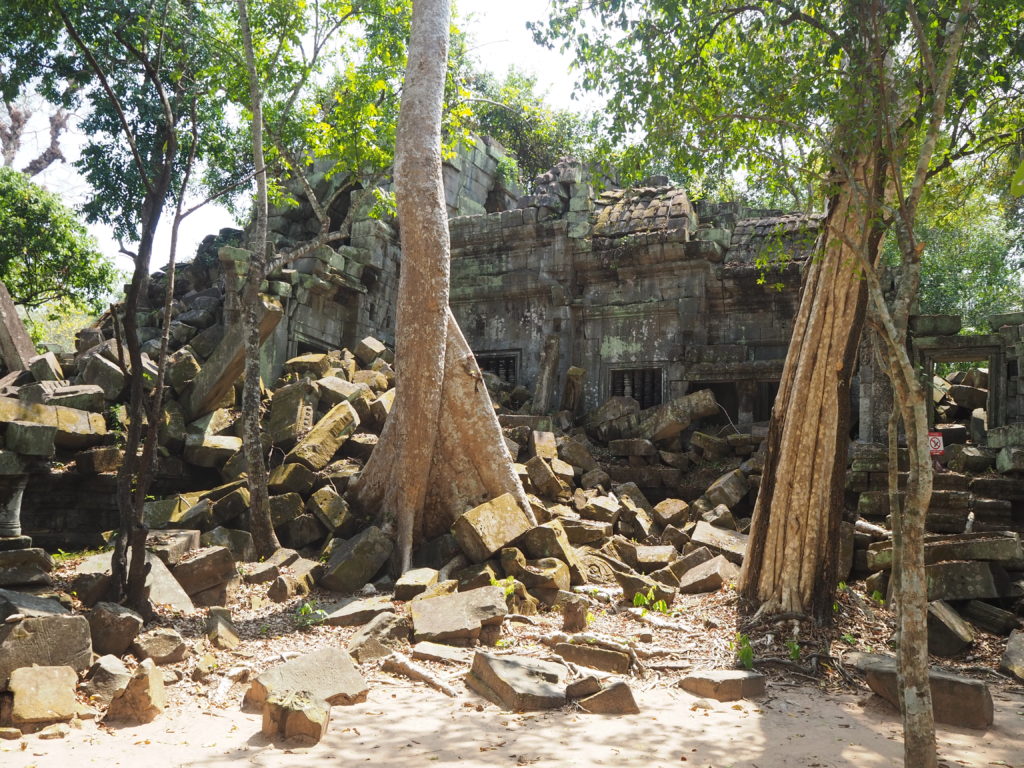
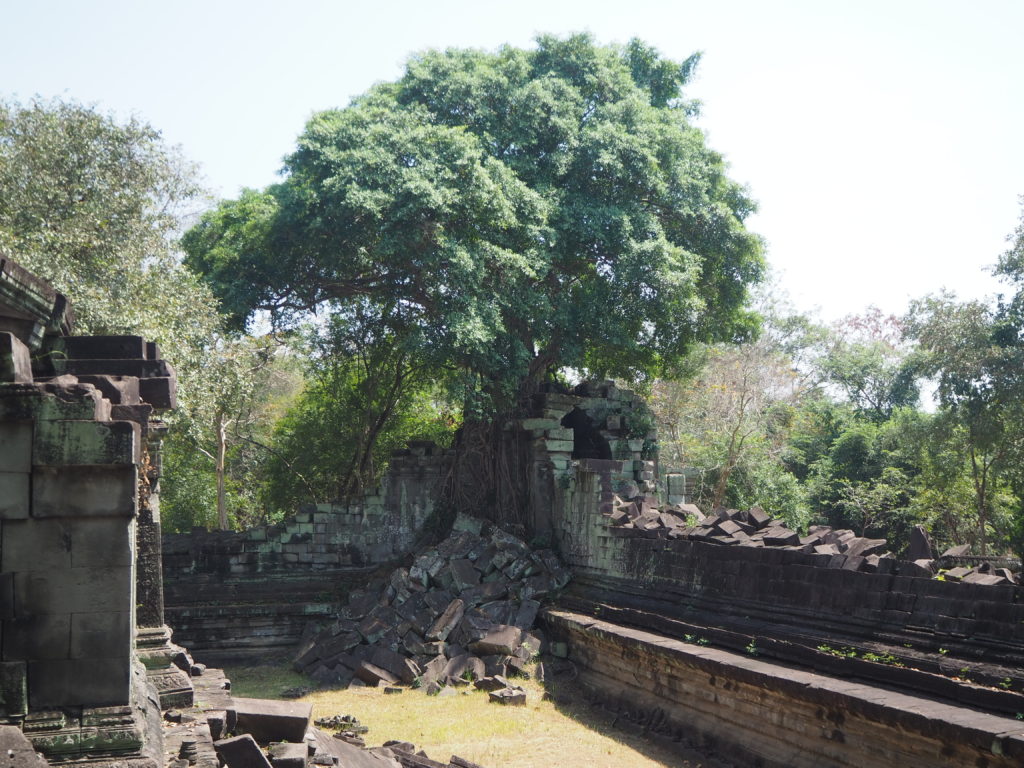
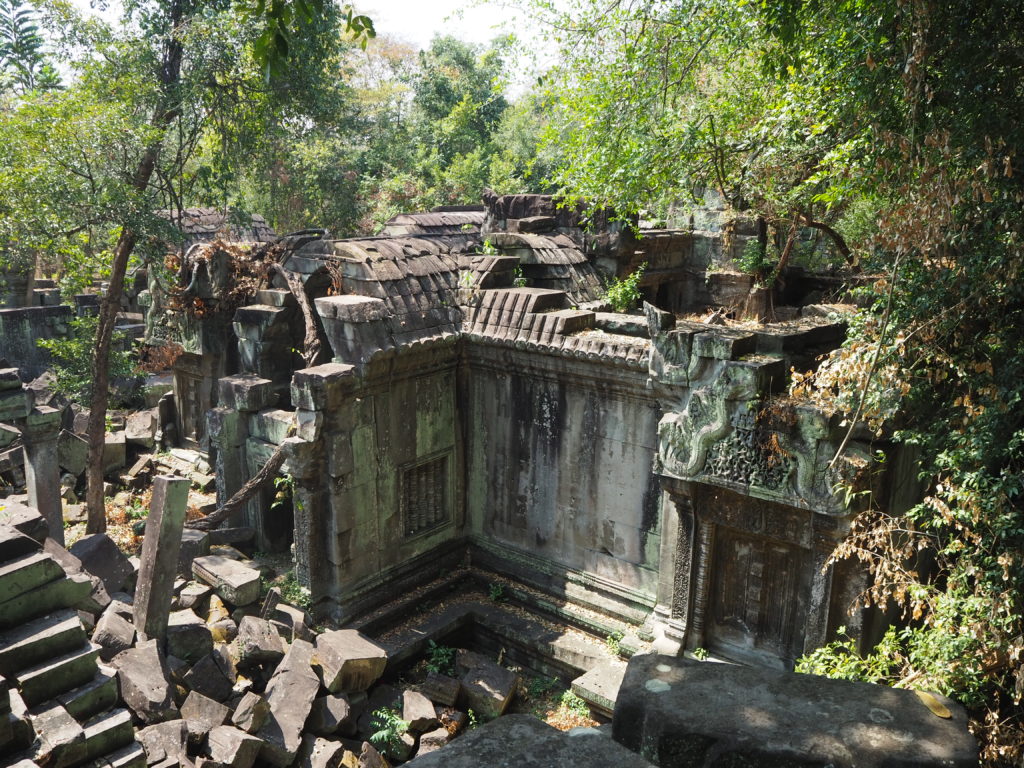
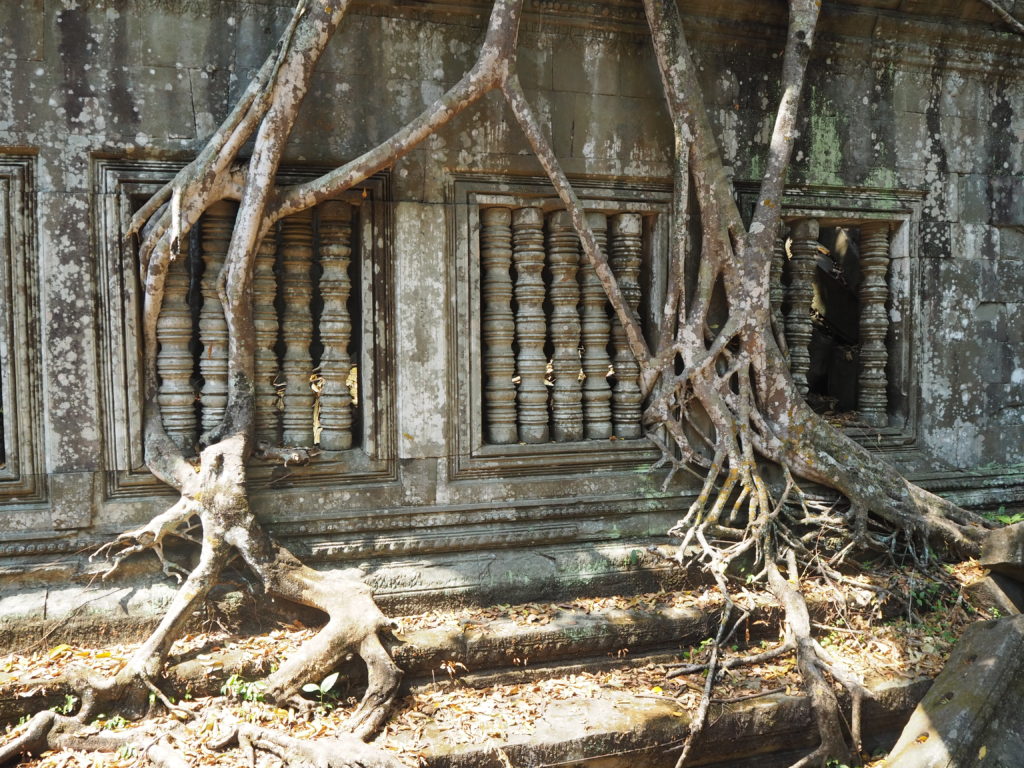
Beng Mealea was wonderful introduction to the world of Khmer temples. Our original itinerary only had this one on the list, but Pouen recommended that we check out a couple more on the way back.
The first was Banteay Srei. The main temple three is behind three gates, each slightly less degraded than the last. The main temple itself was a beautiful complex of delicate carving and medium sized towers.
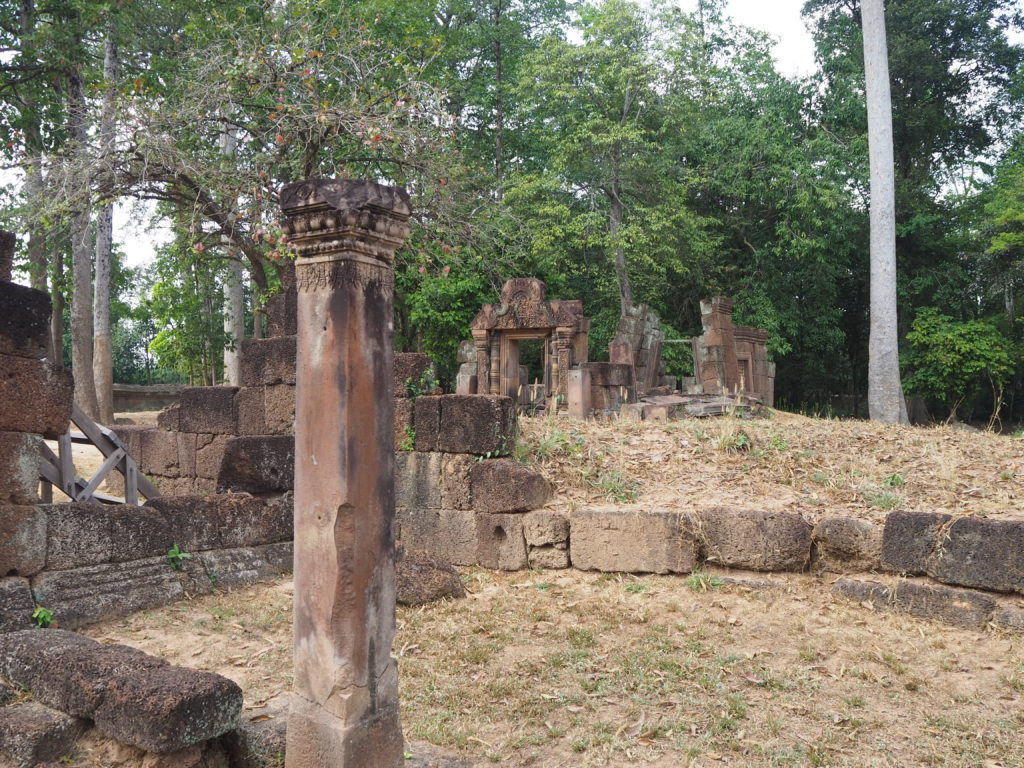
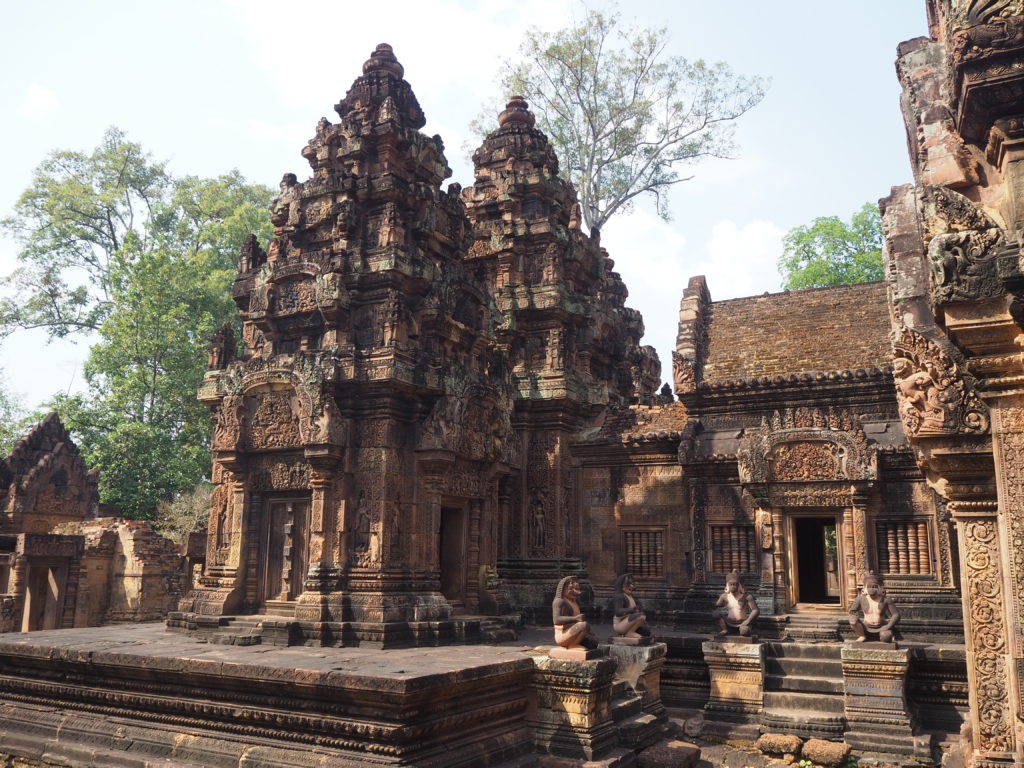
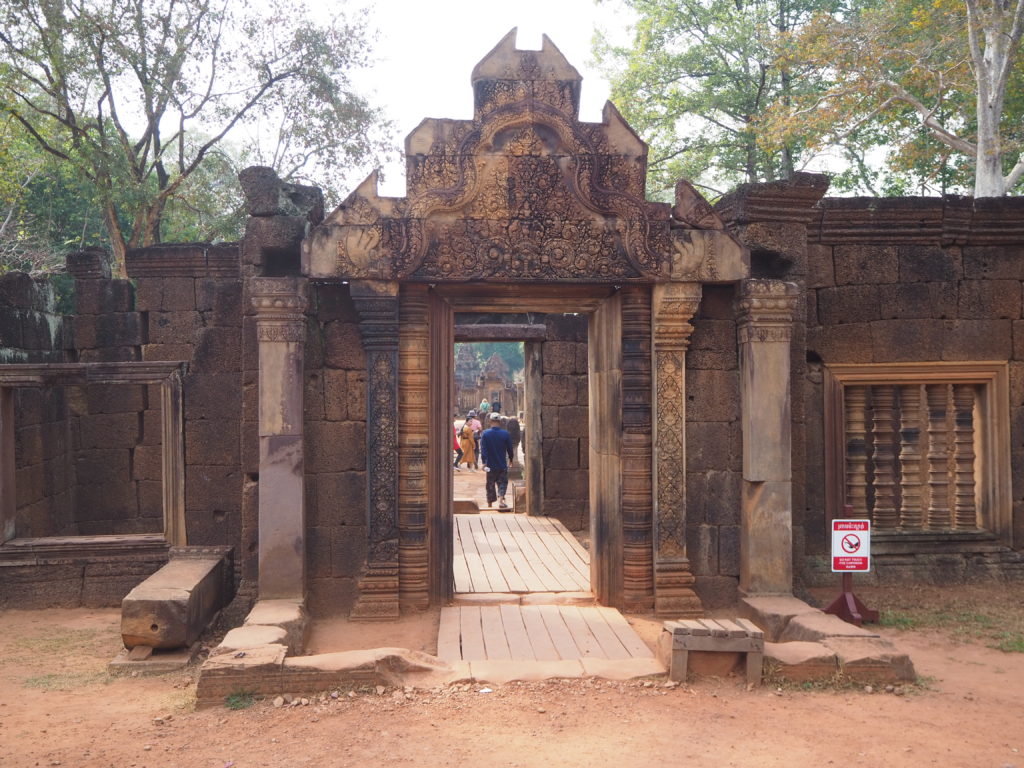
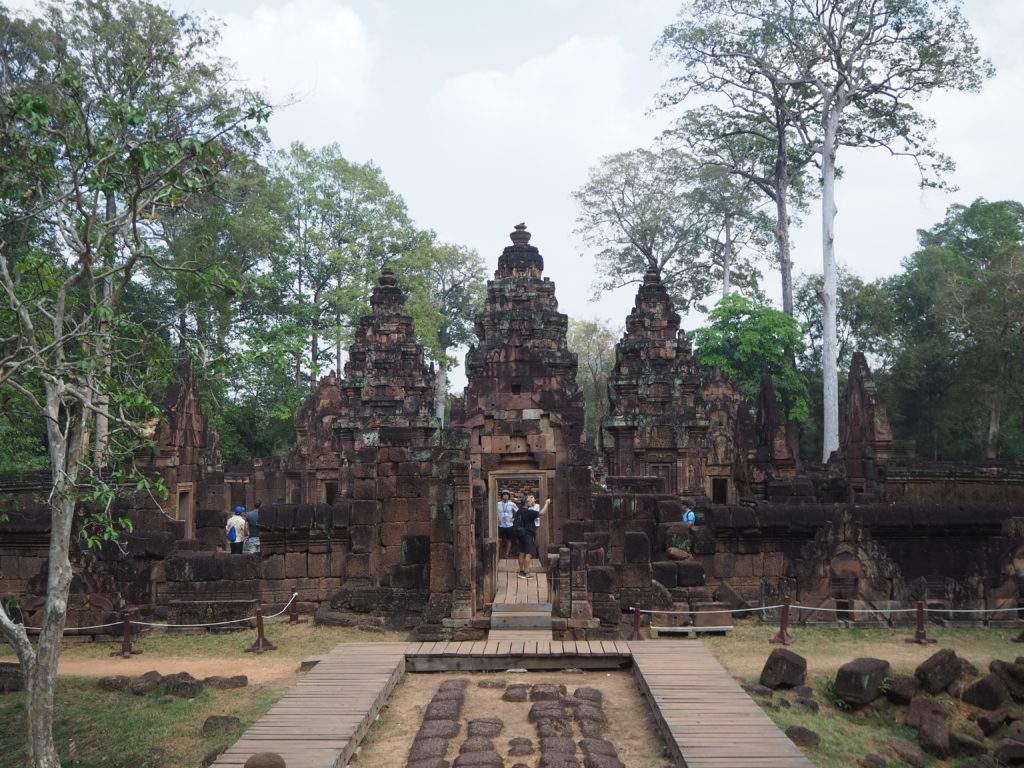
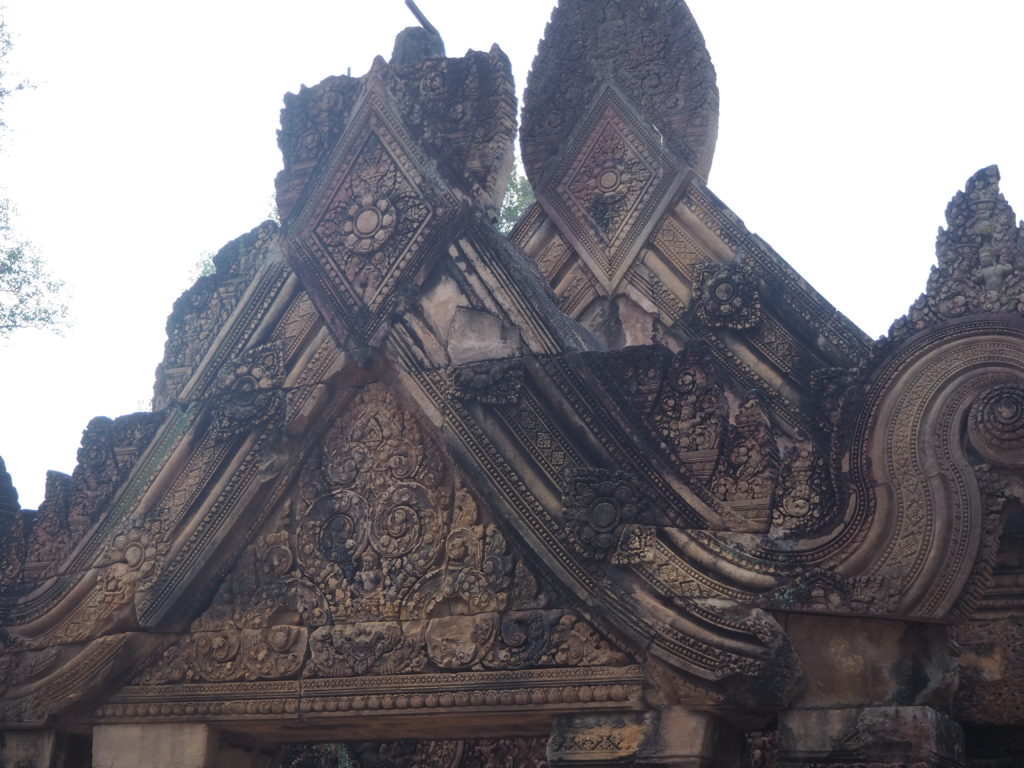
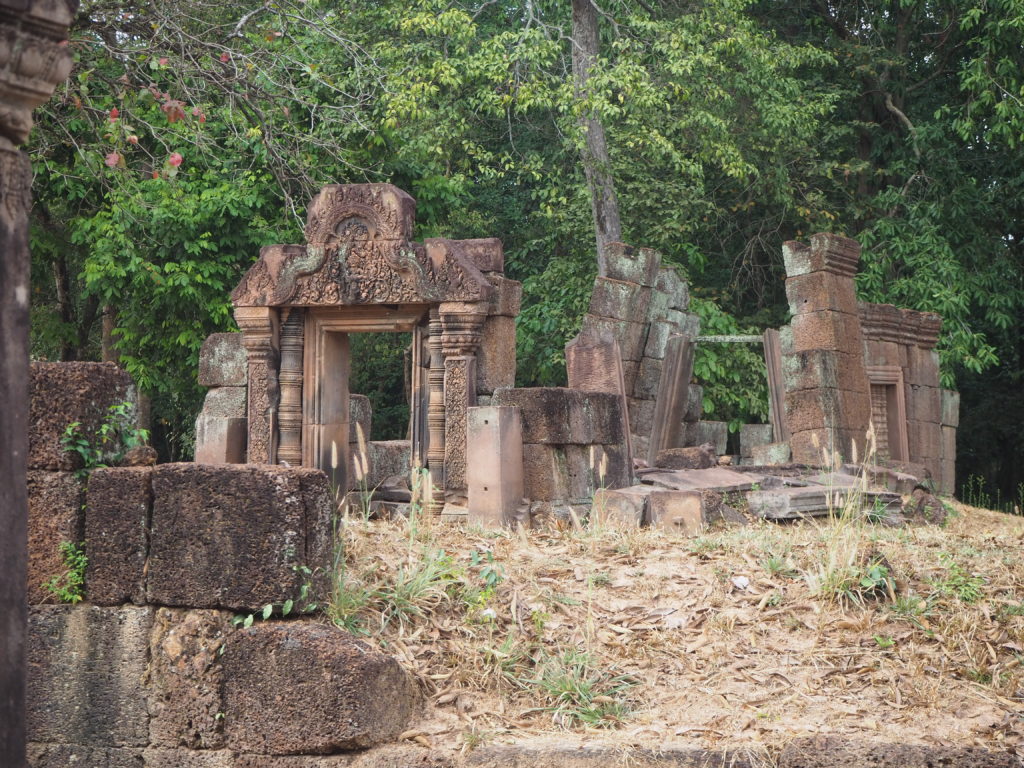
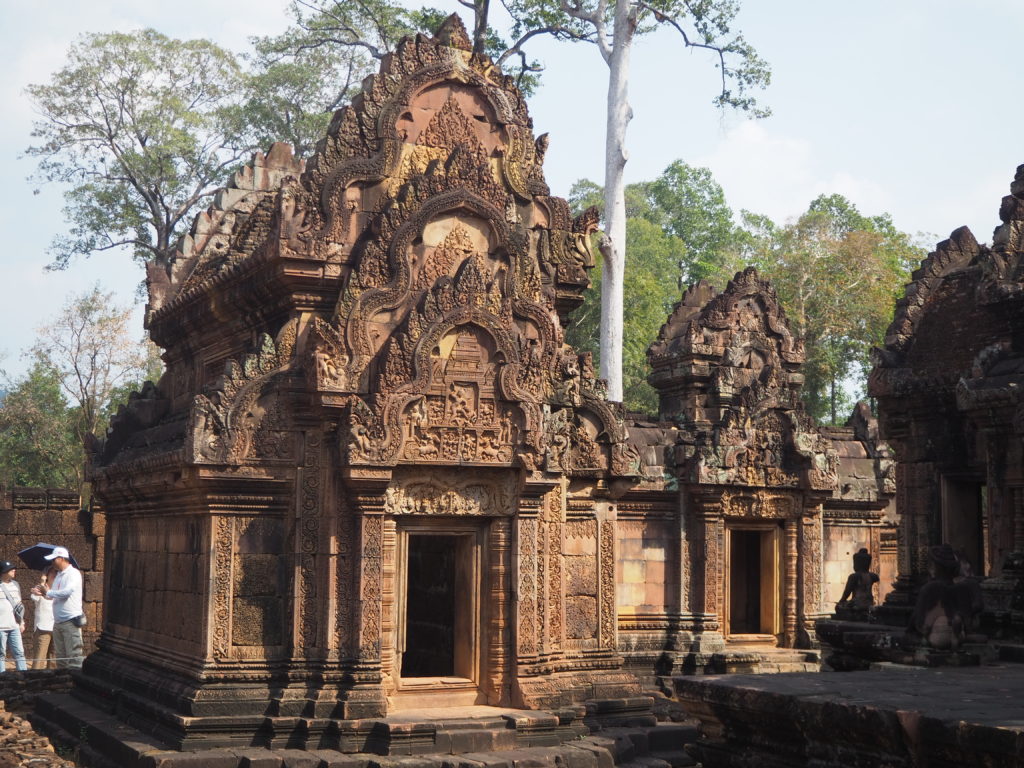
On our walk back we took a scenic route through the country side. The majority of flat Cambodian land is cleared and used for agriculture. Around the temples it is a mixture of wetland, farmland and jungle. The afternoon was a sweltering heat over 35 degrees. Cam was fading quick, but luckily at the entrance there were ladies selling sliced mangoes. A good pick me up.
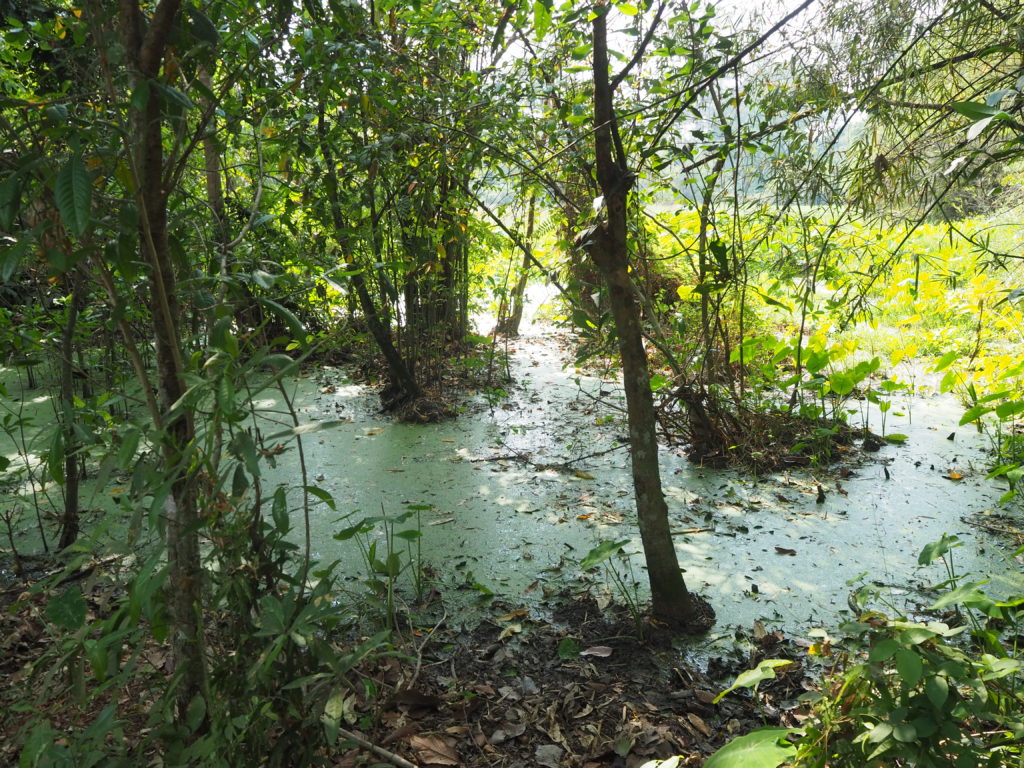
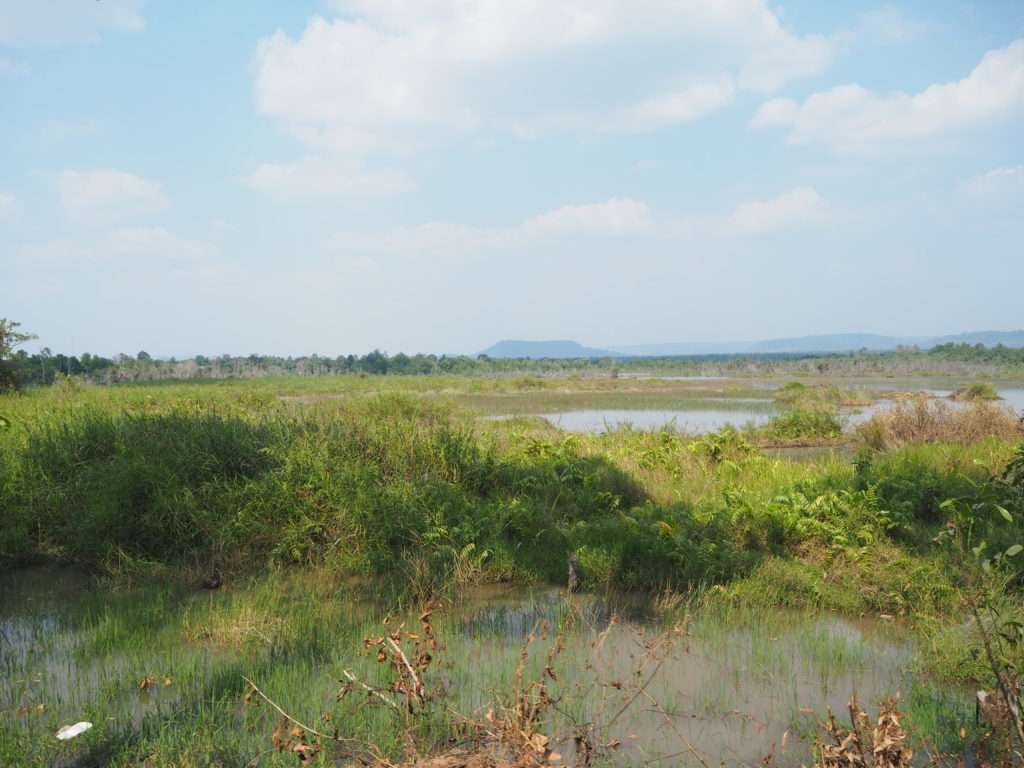
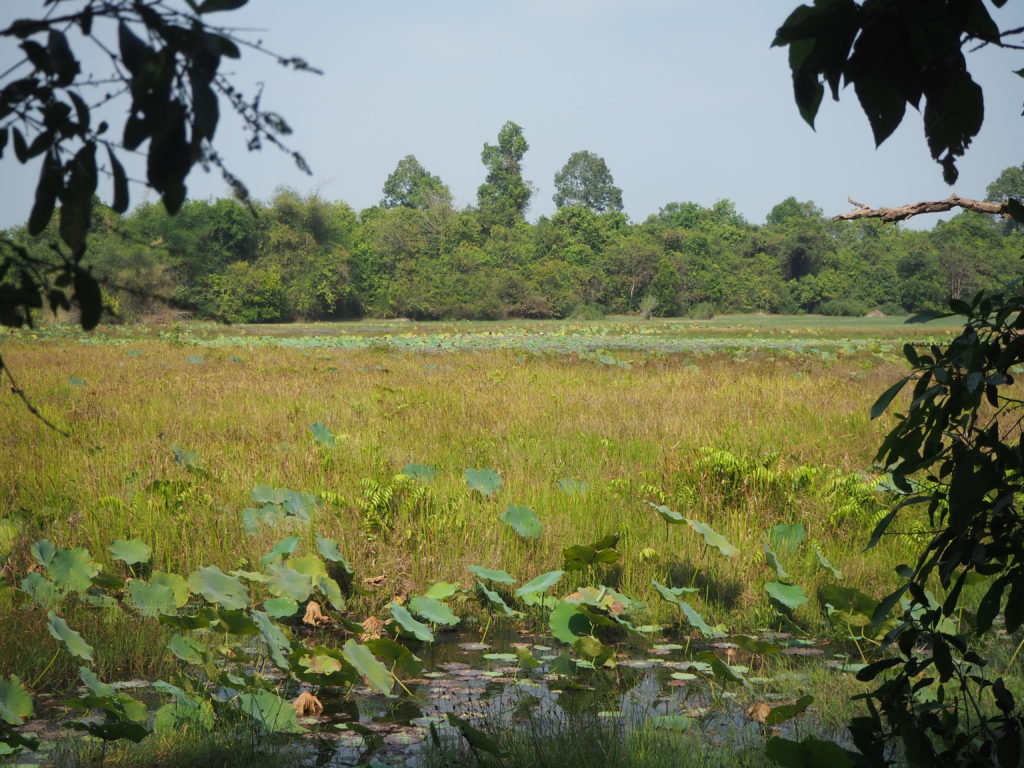
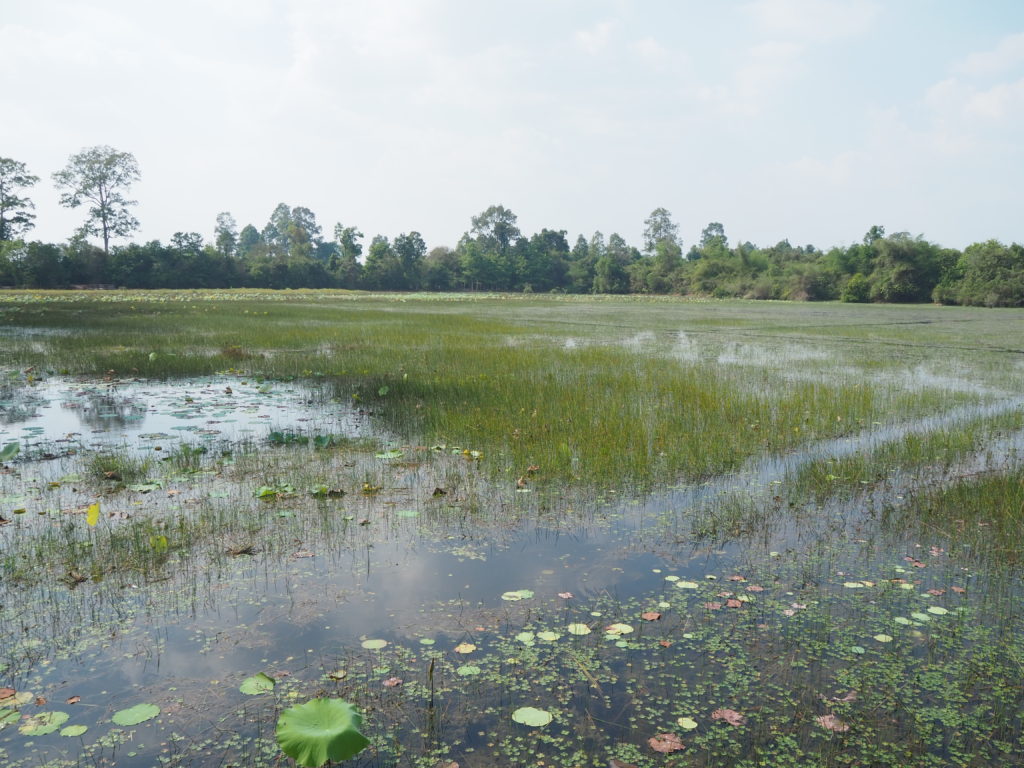
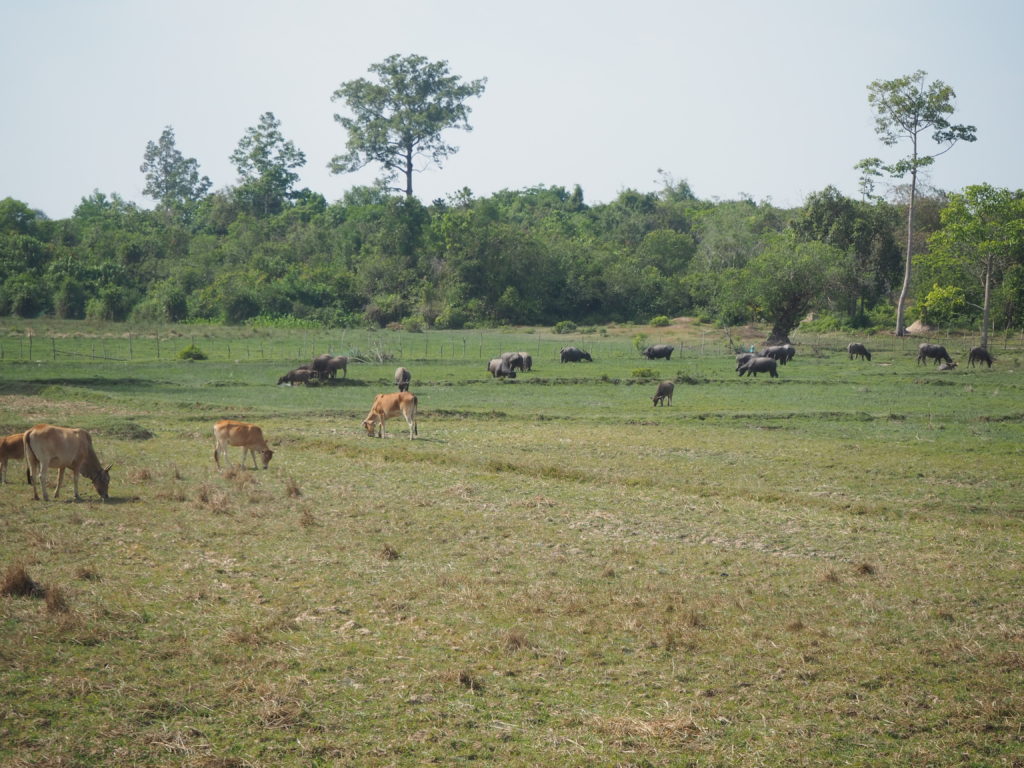
The last temple of the day was Banteay Samre. This one was a lot quieter, and is much lower on the tier list of temples. The heat had deteriorated our minds at this point, so we zombie walked around the complex before heading out and home.
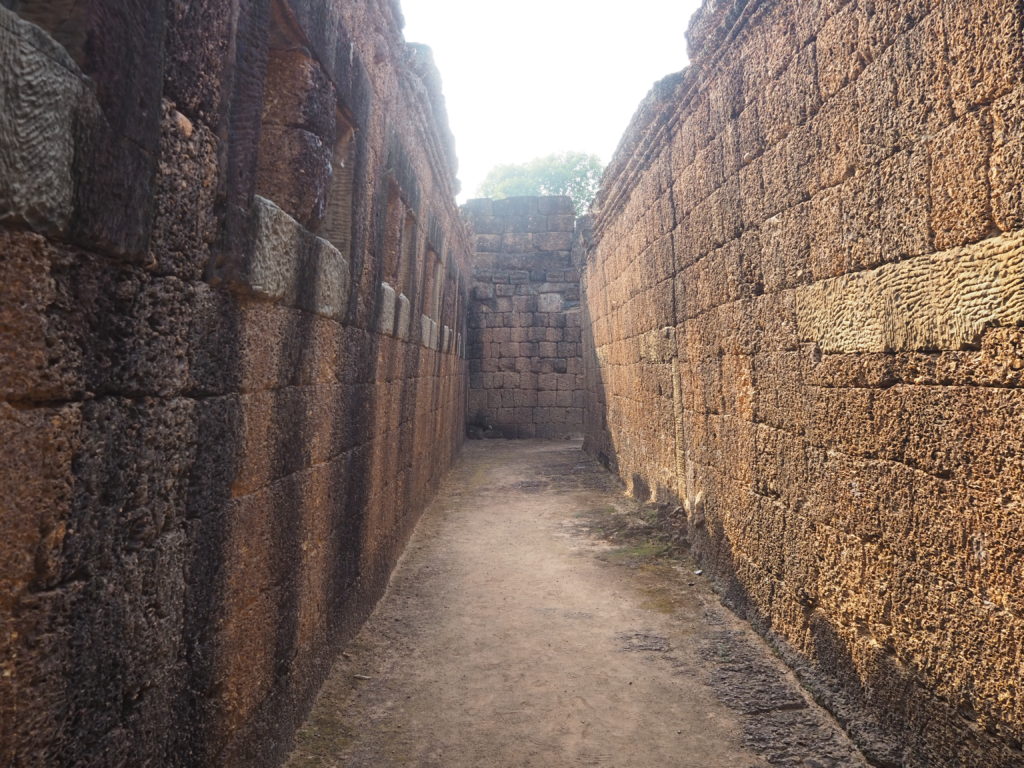
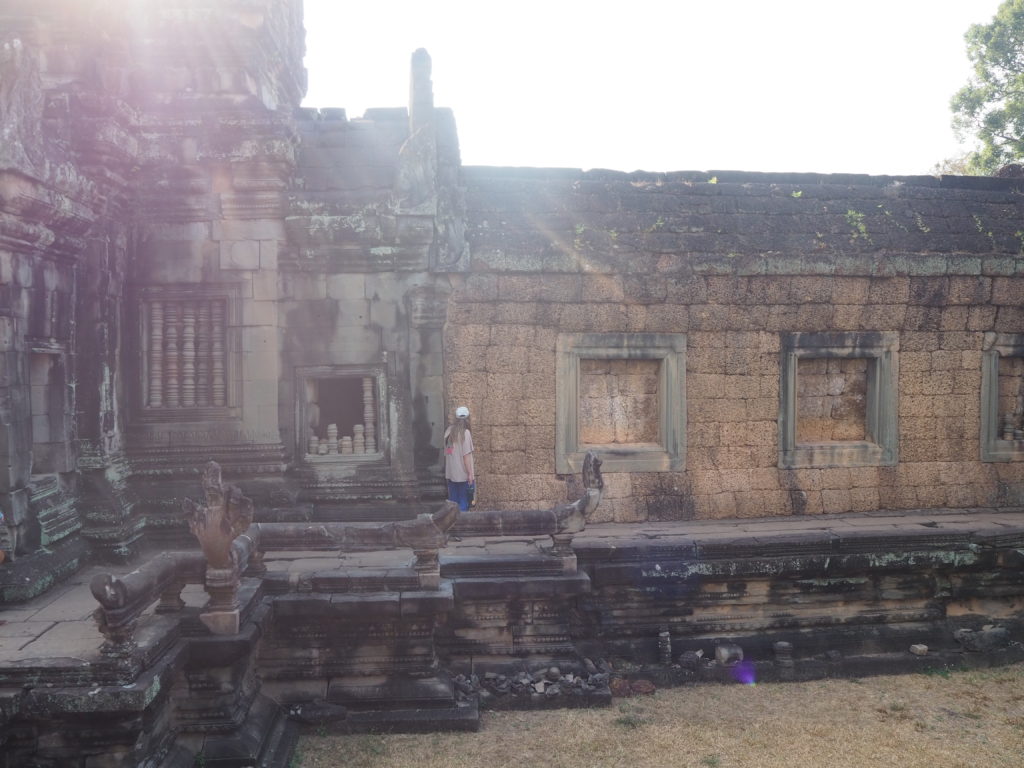
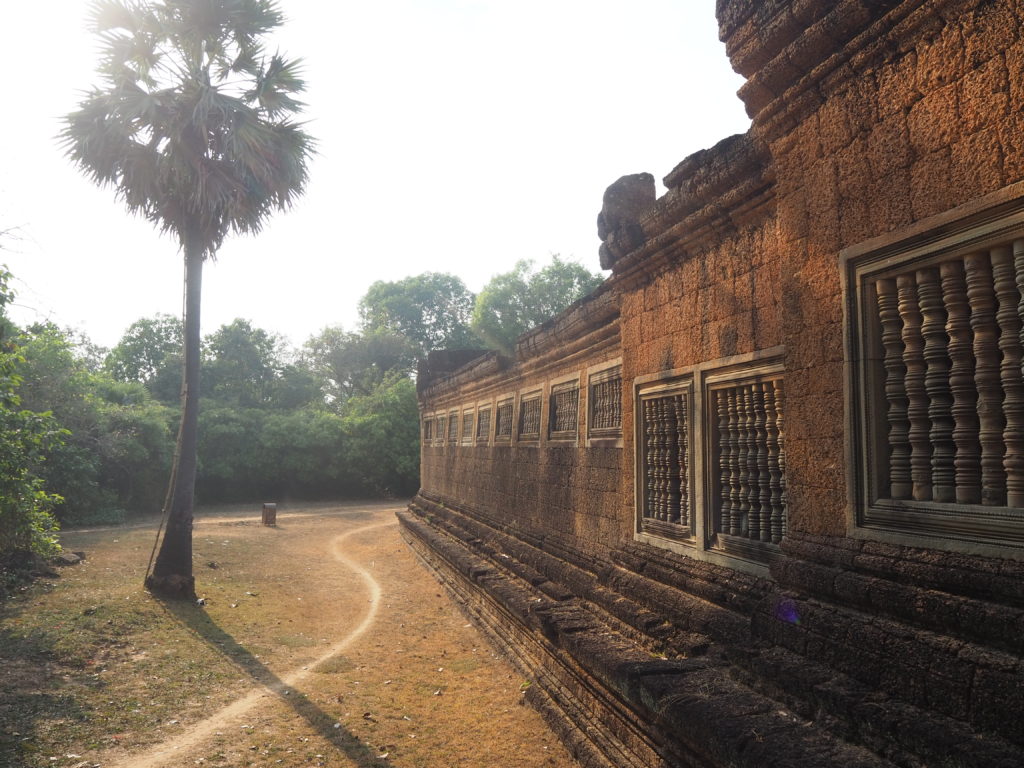
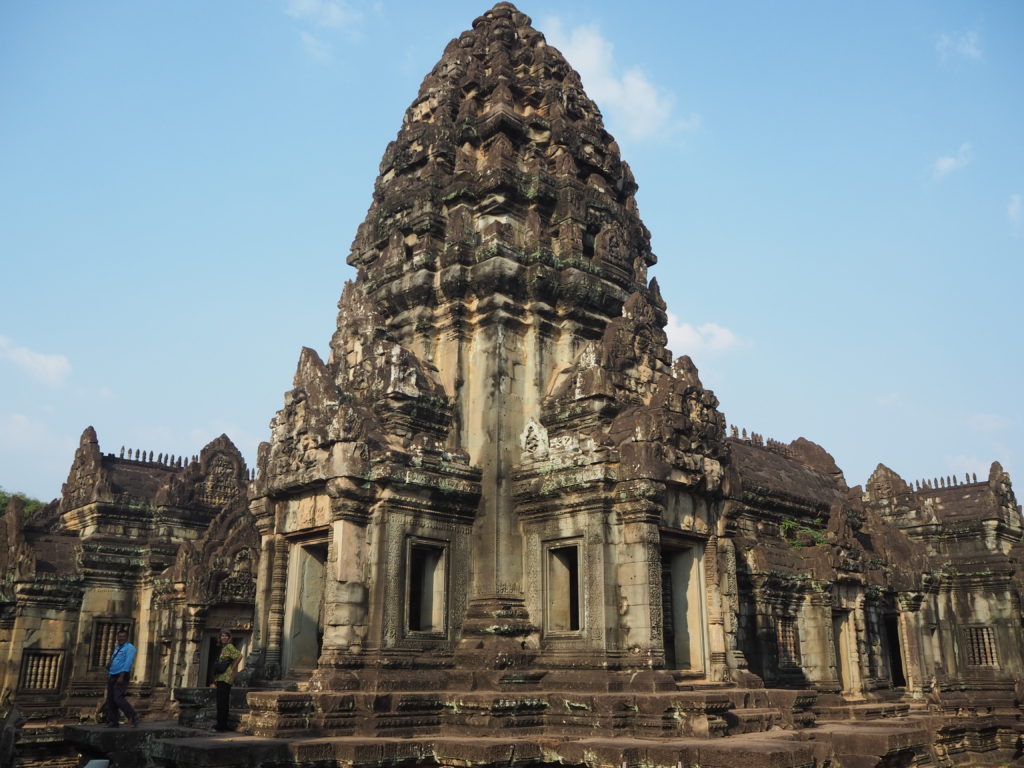
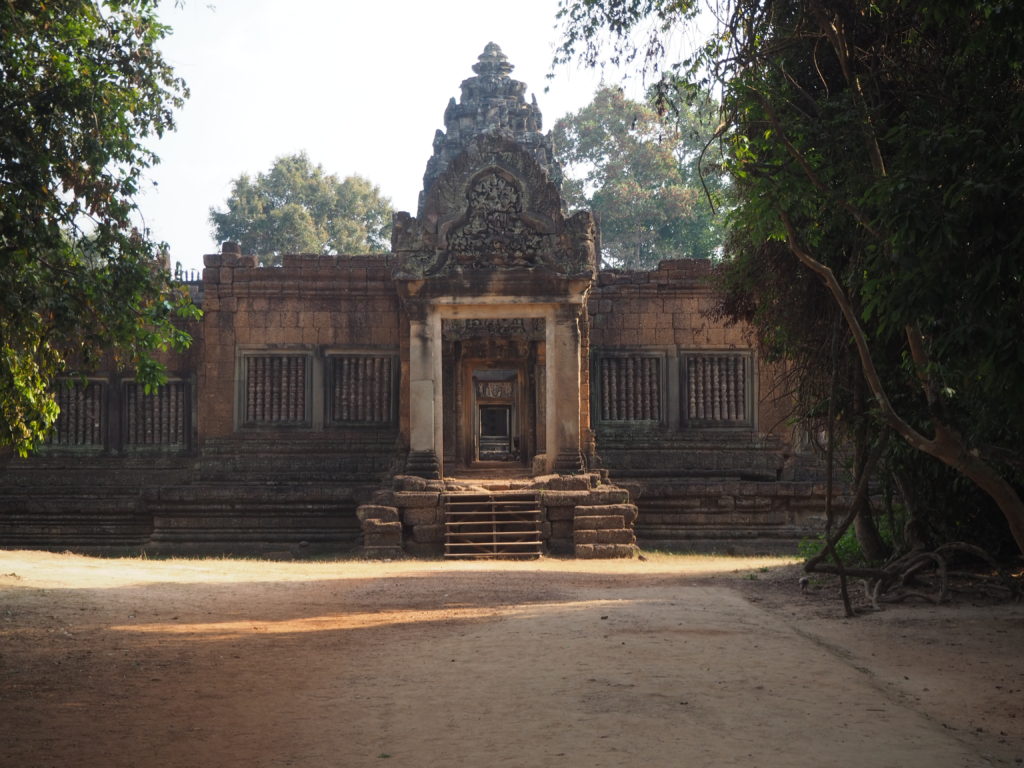
Three temples on our first day, and many more to come. Each were all different to some regard. Though there are common building themes between all of them, it makes each adventure unique. Lets see what tomorrow has to offer! See you there!

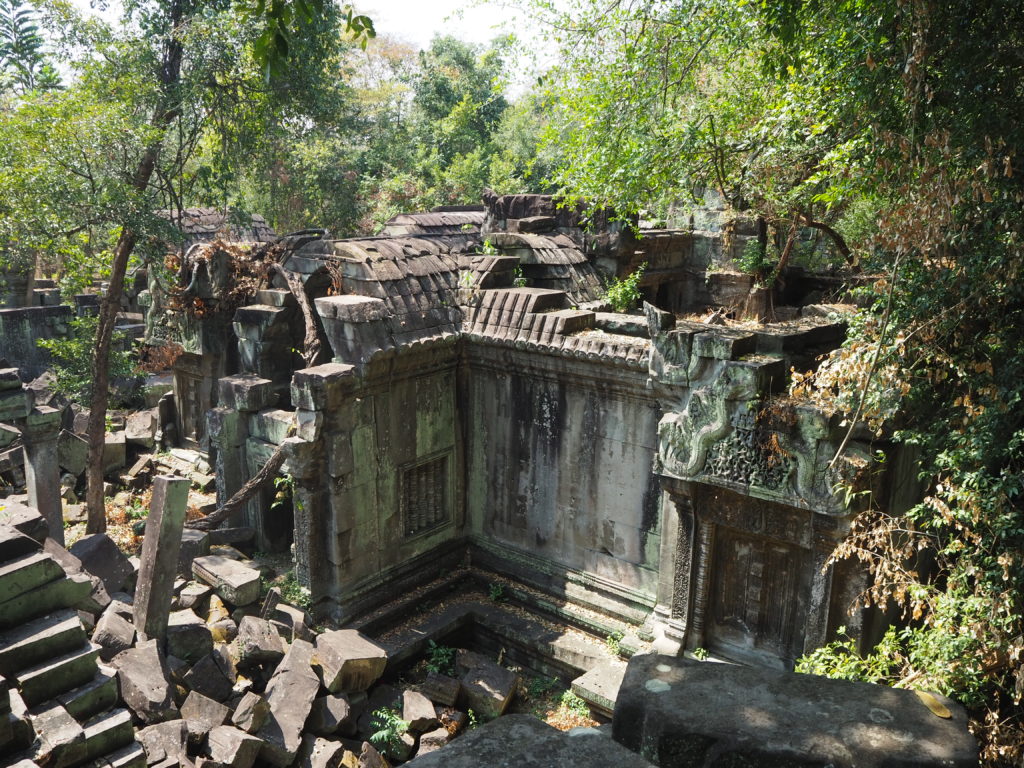
Your photos have a certain post-apocalyptic vibe, a fallen grandeur of a different epoch melting into the heat and vegetation. Nice to see these temples early in the day and uncrowded, the heat can be debilitating as you know. Nice to have a pool to kick back into. Stay cool
Isn’t it something that you can just wander around checking out the ancient temples? So many temples, so little time.